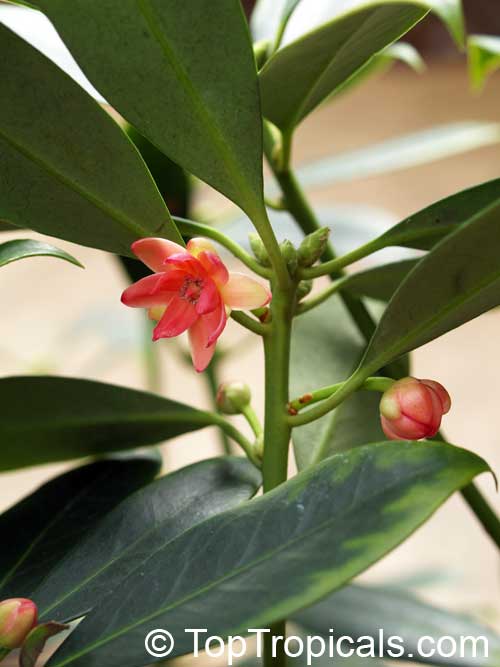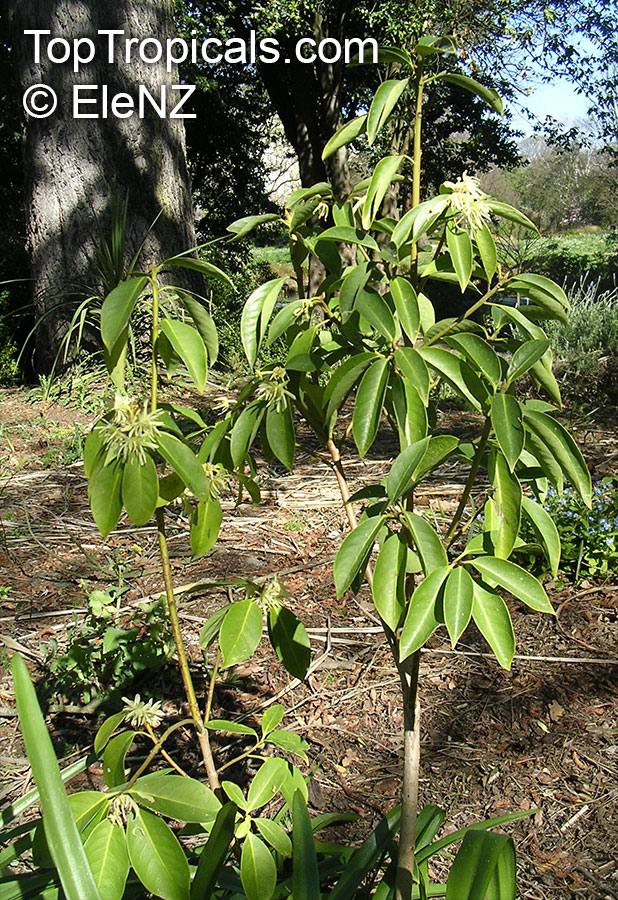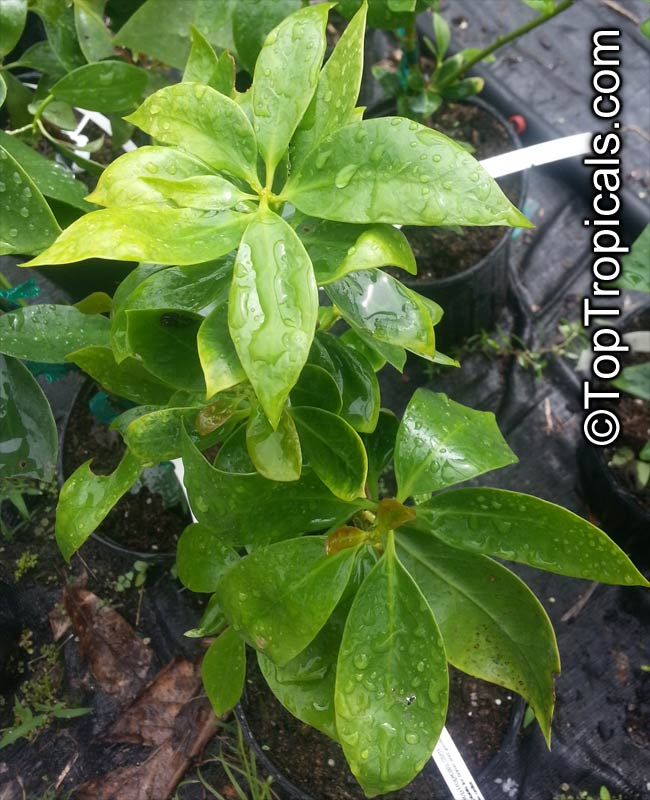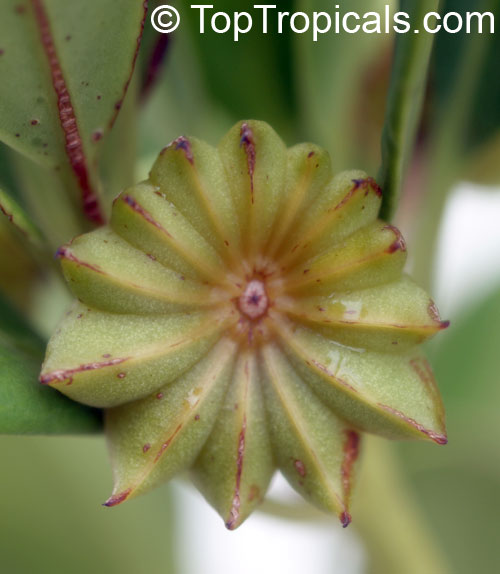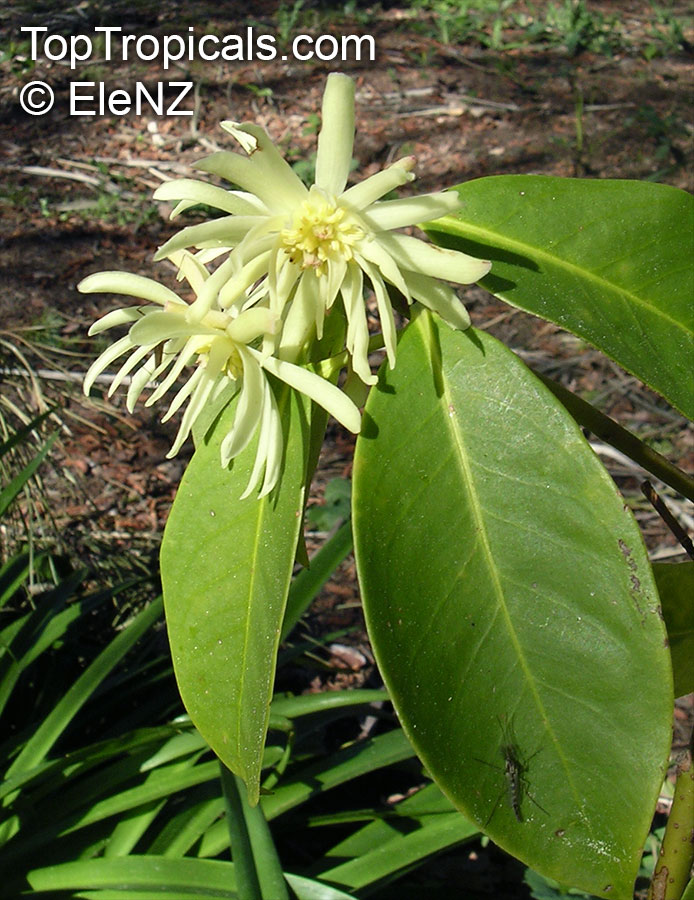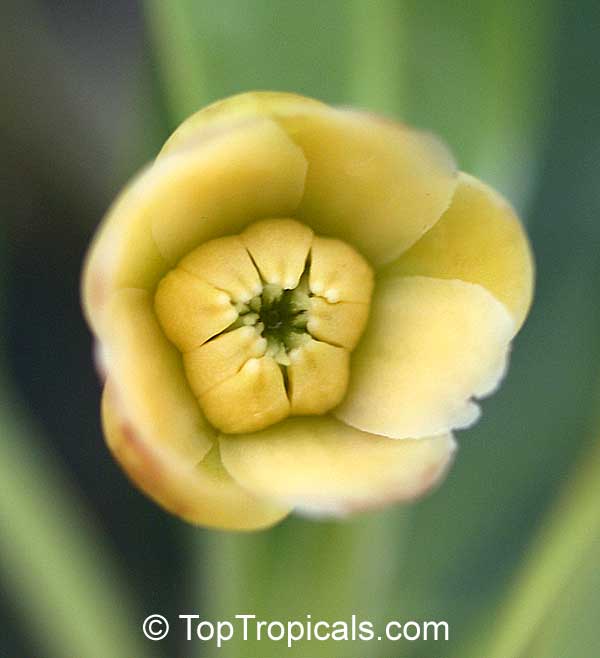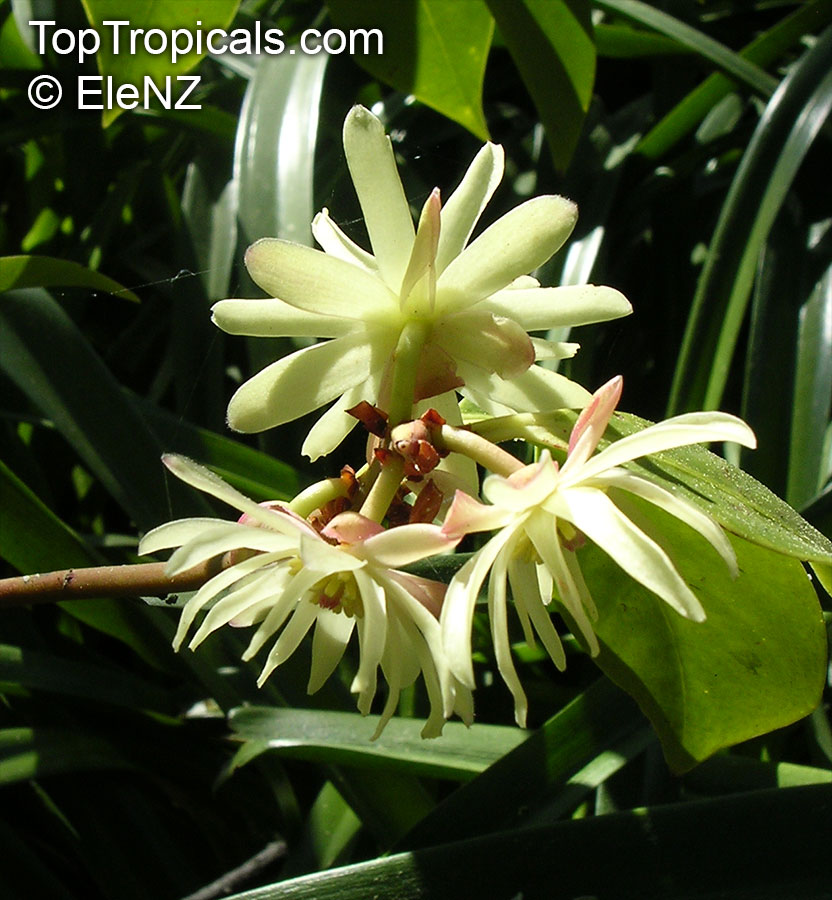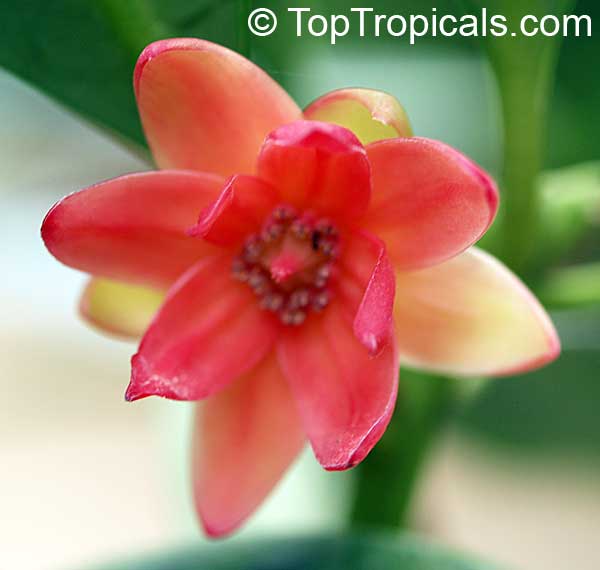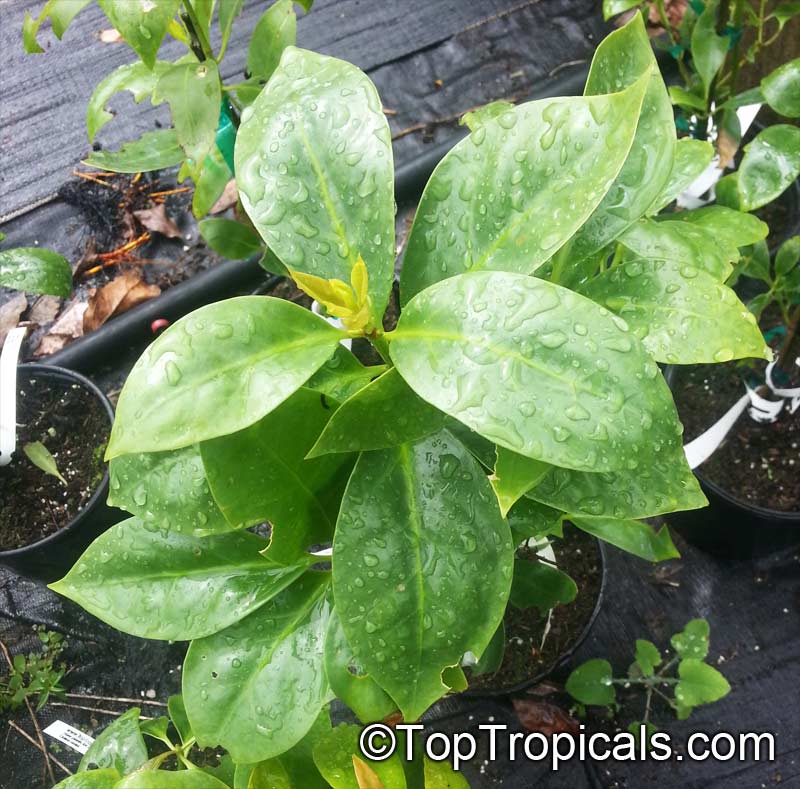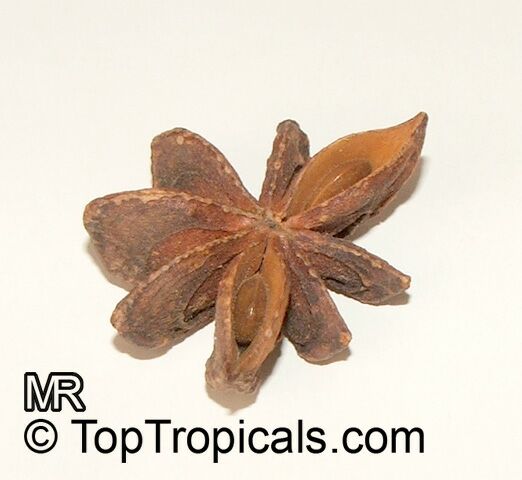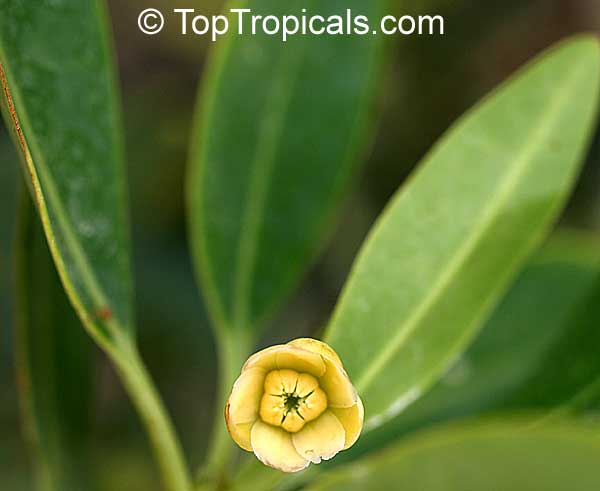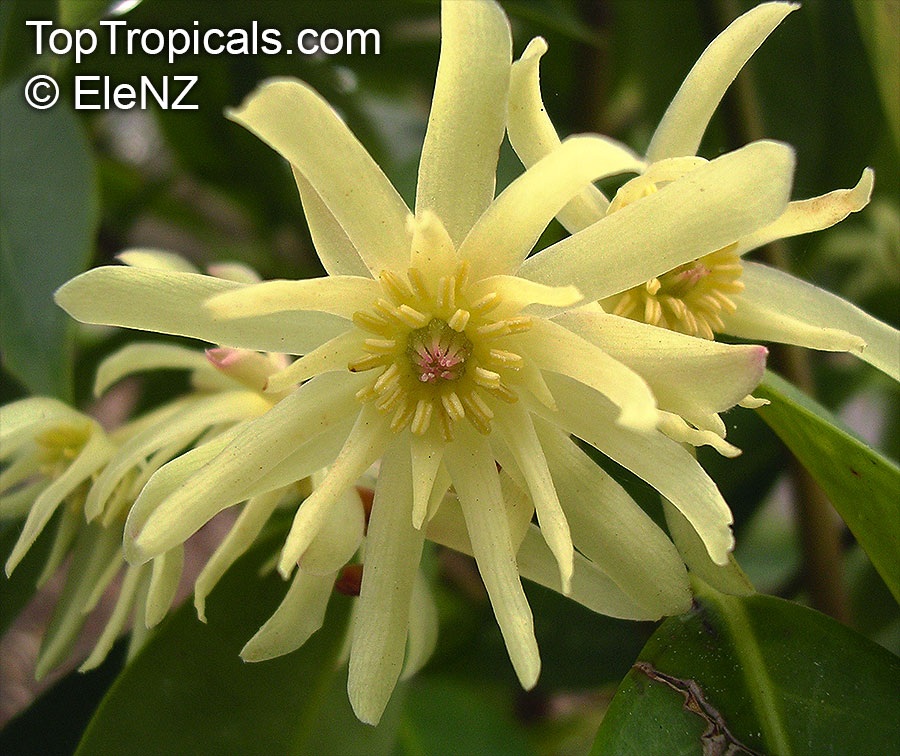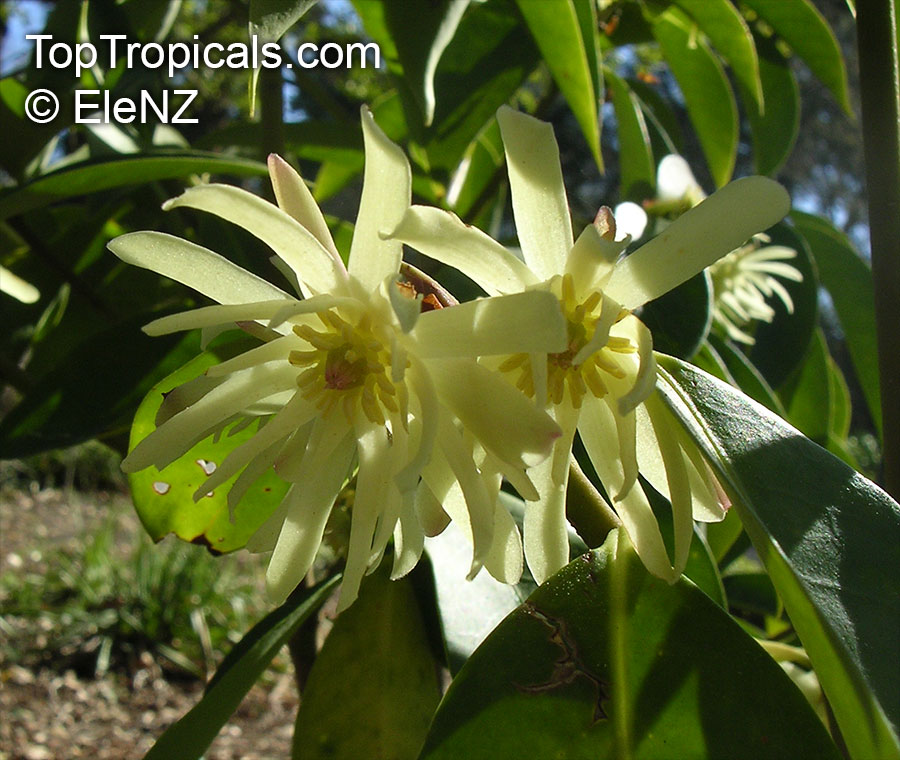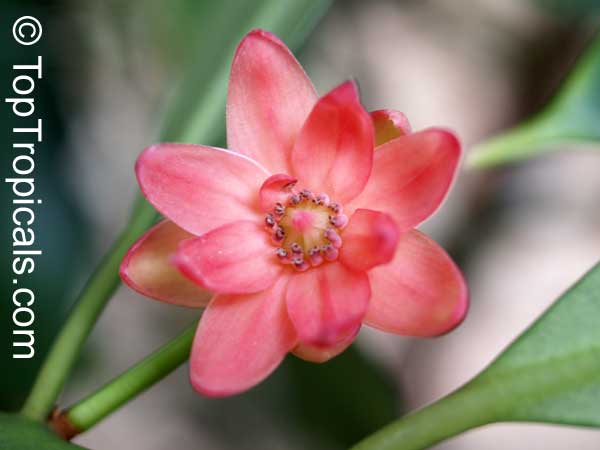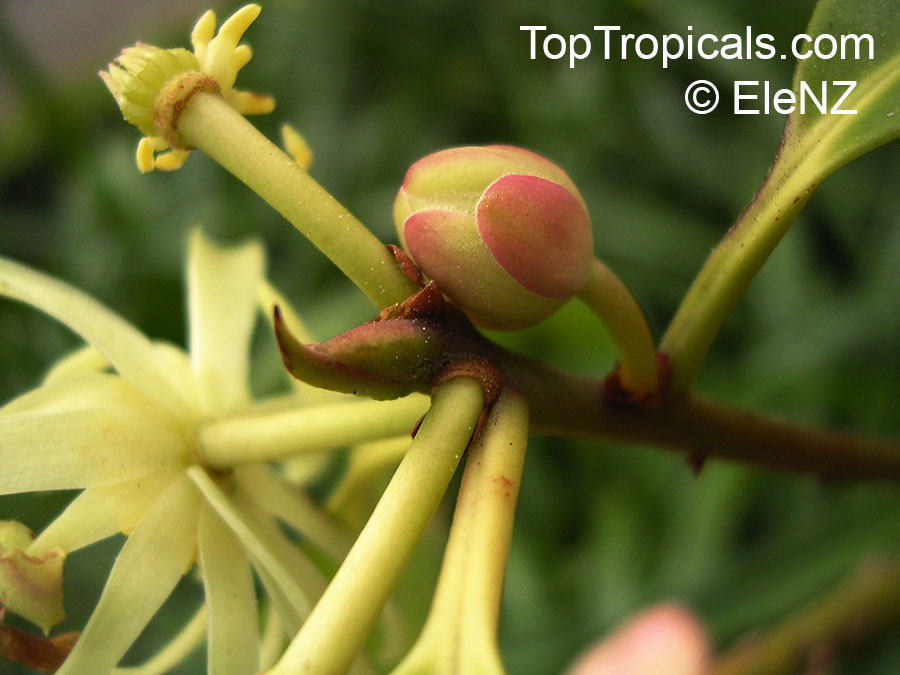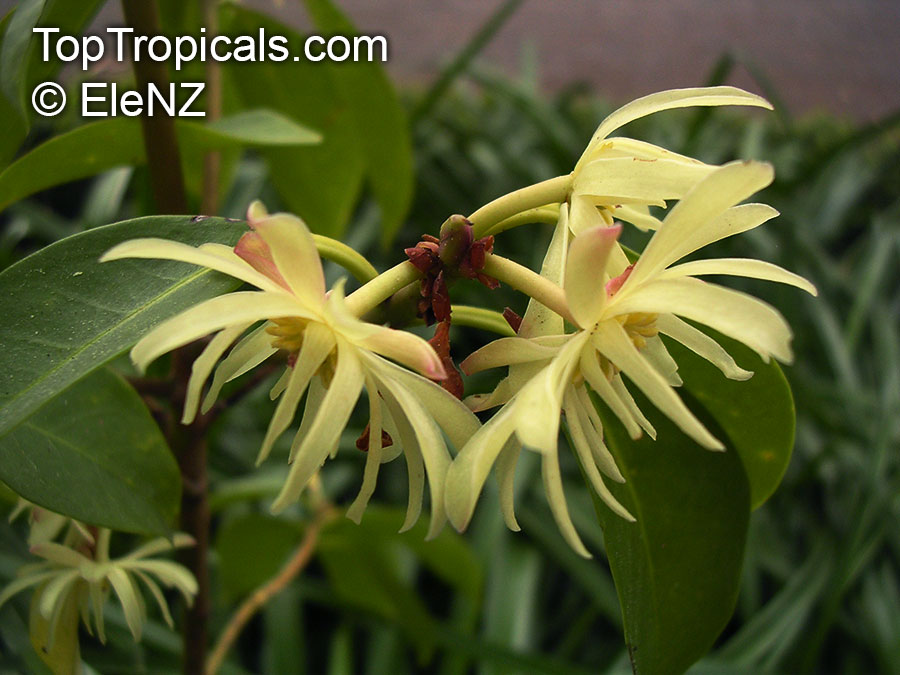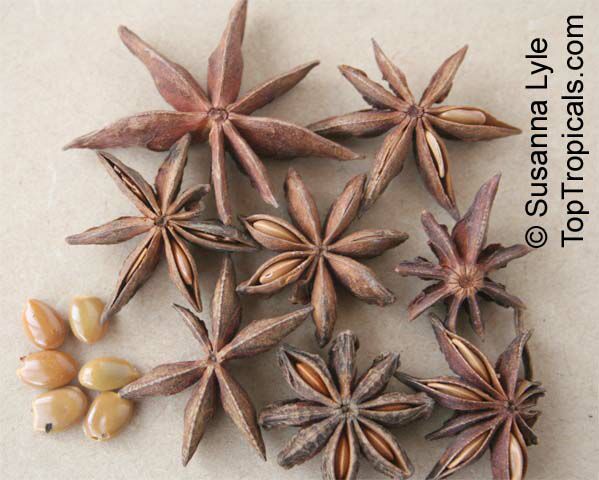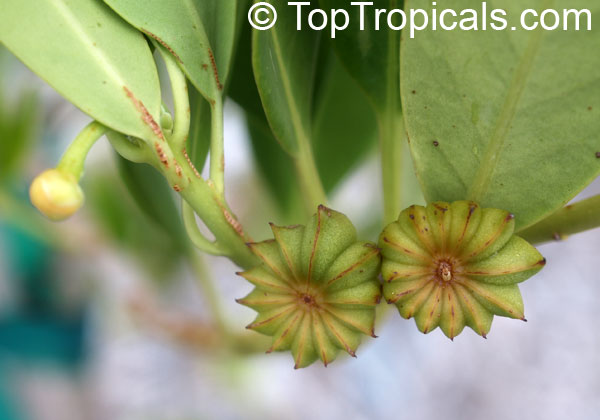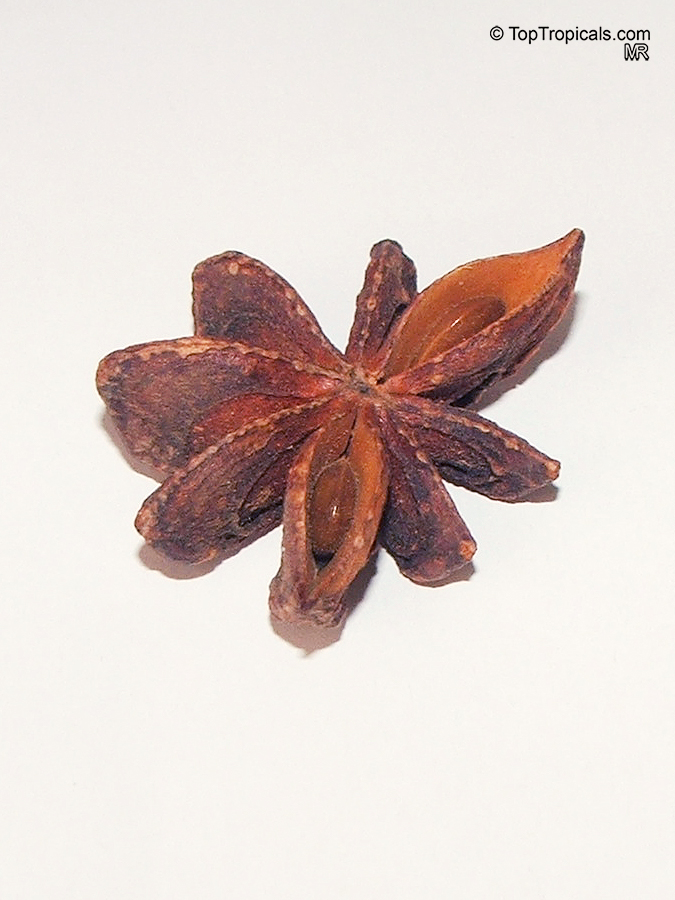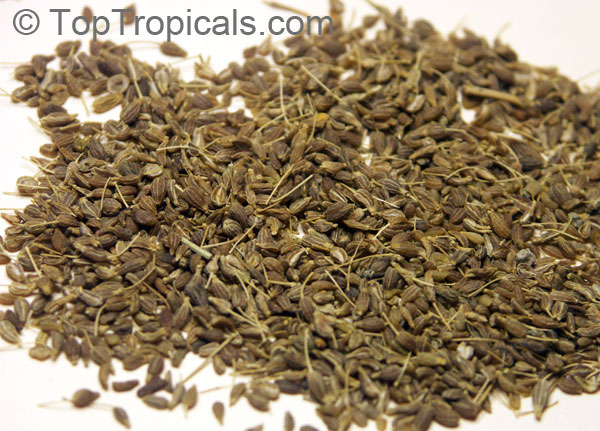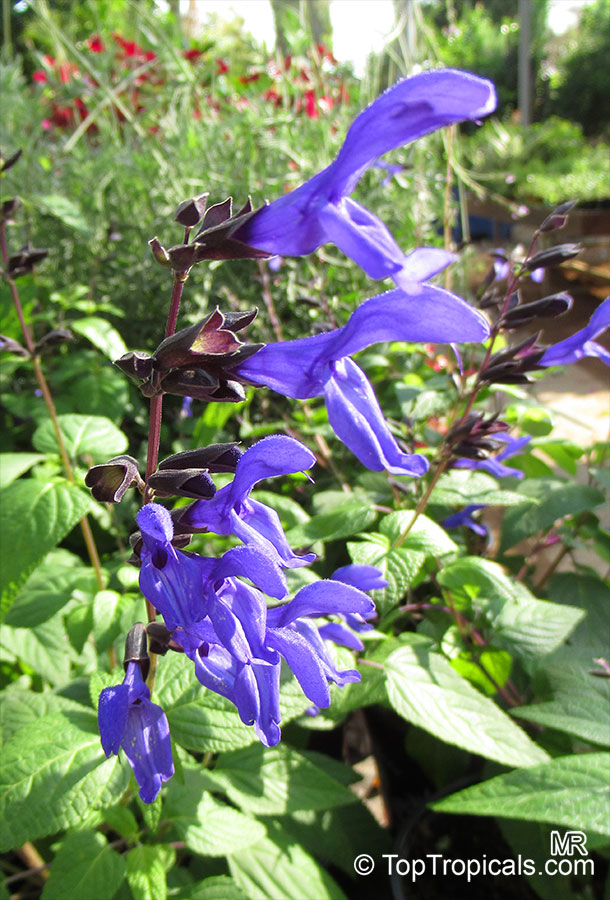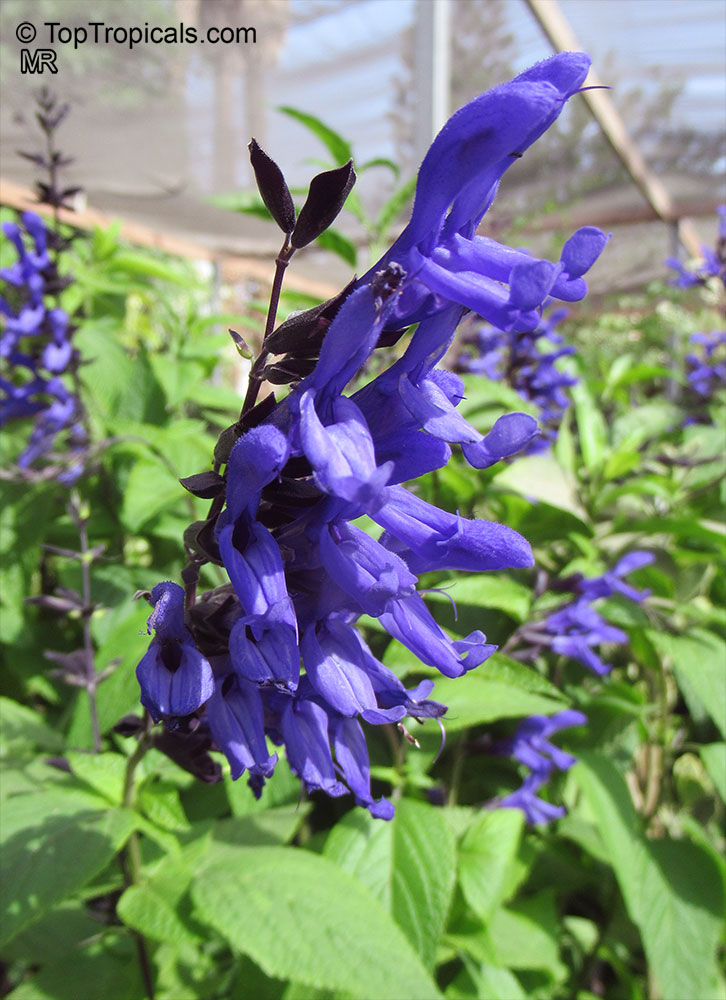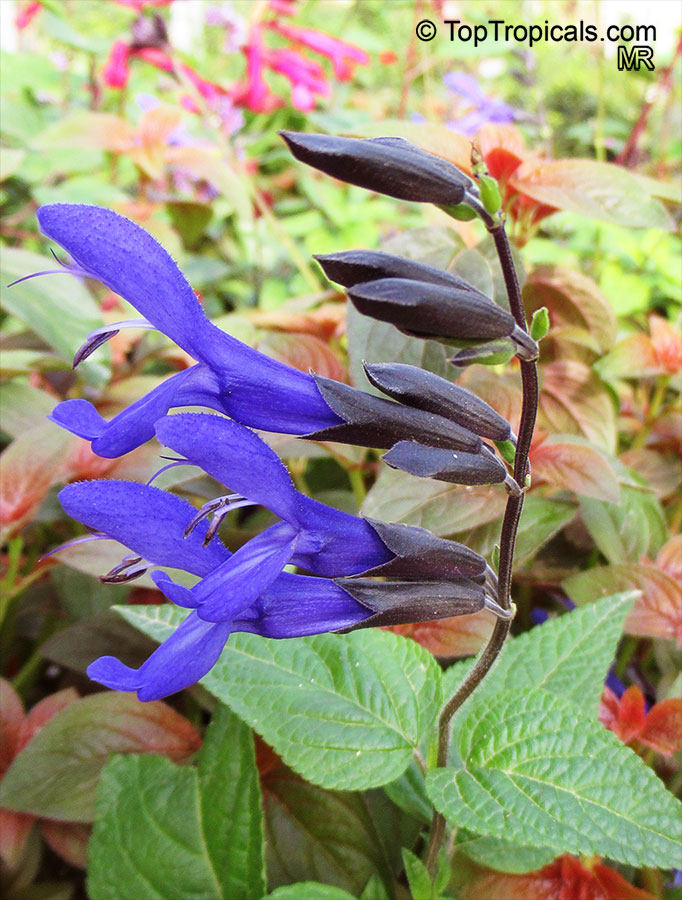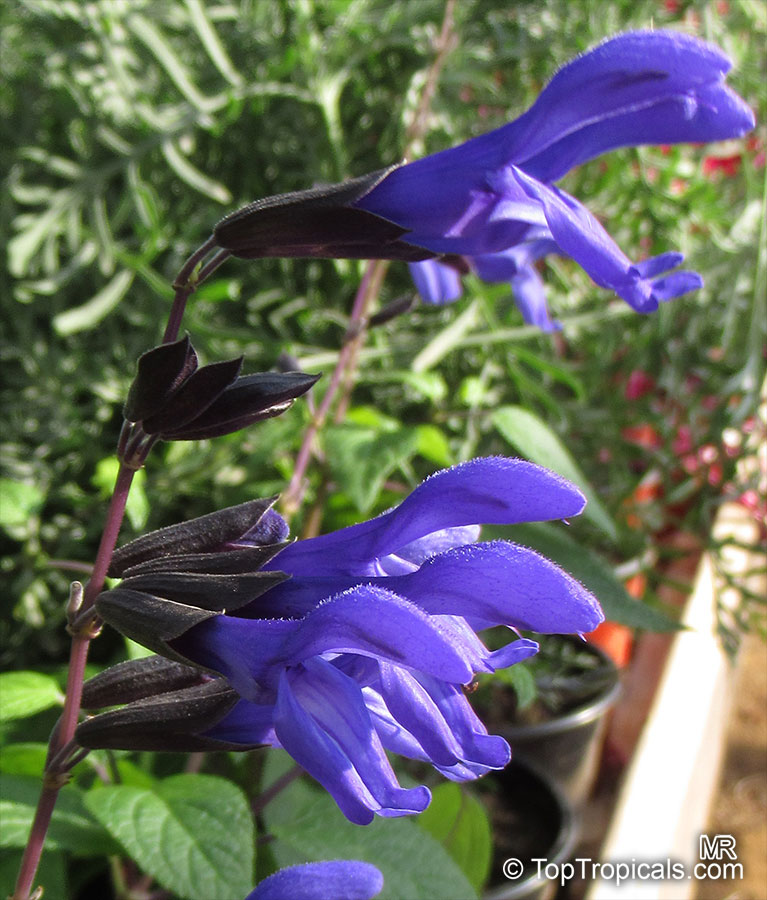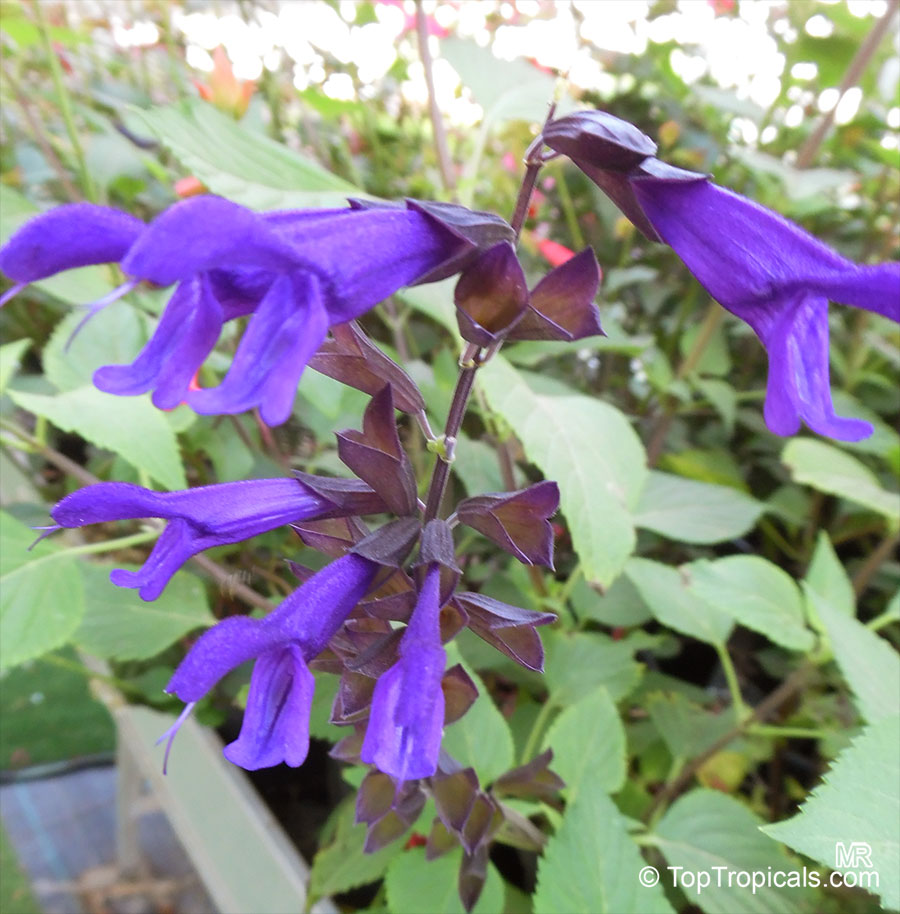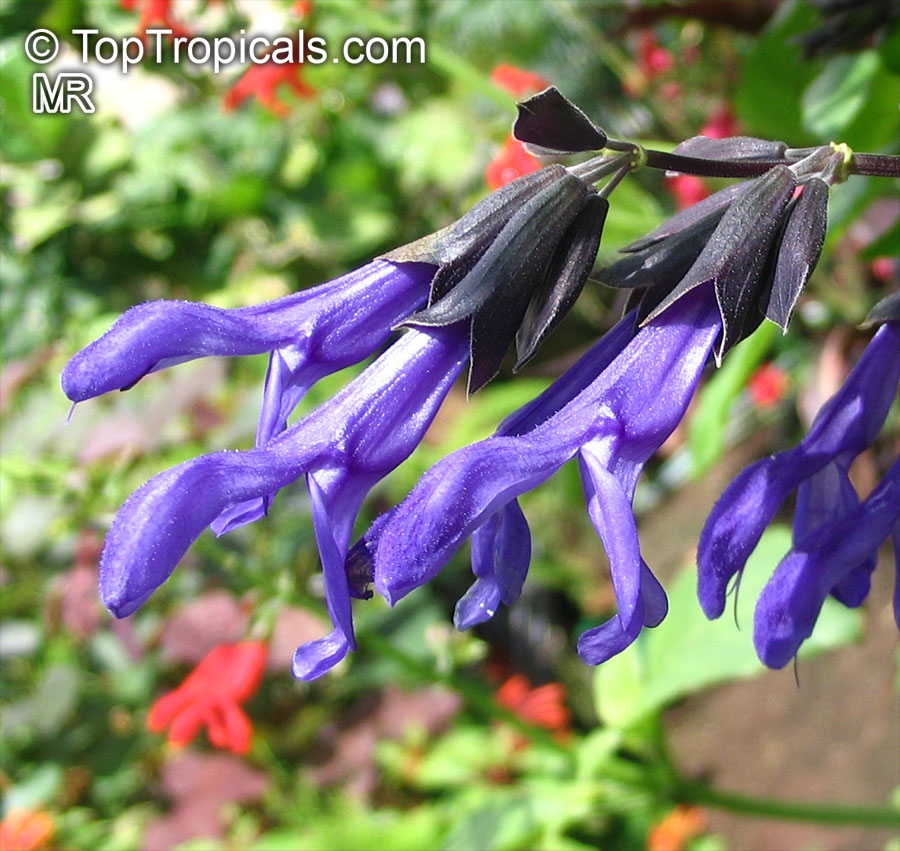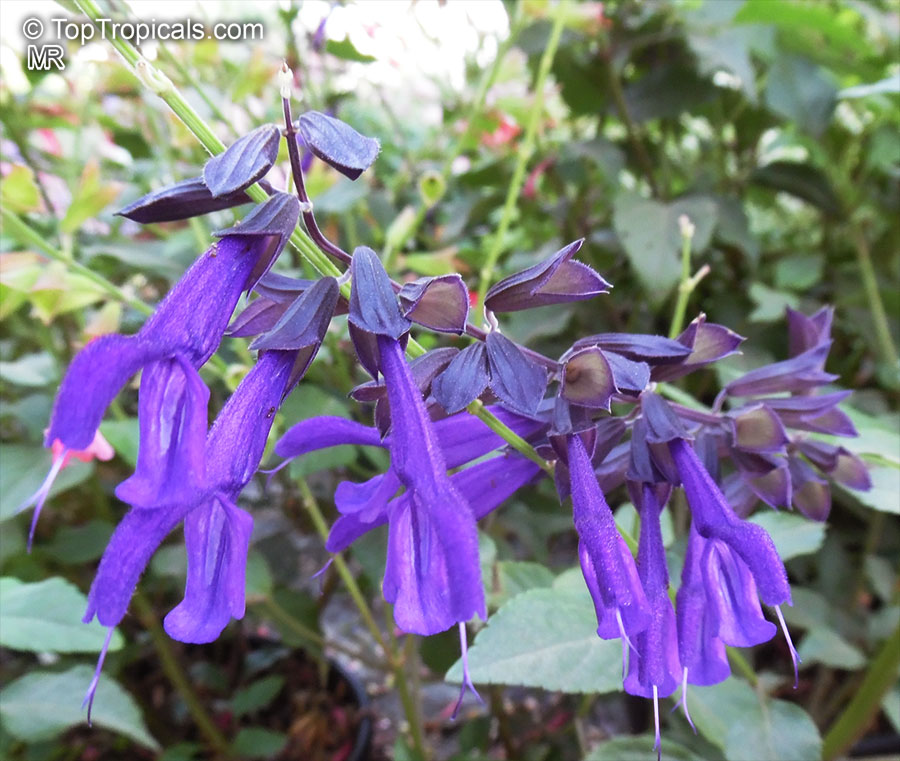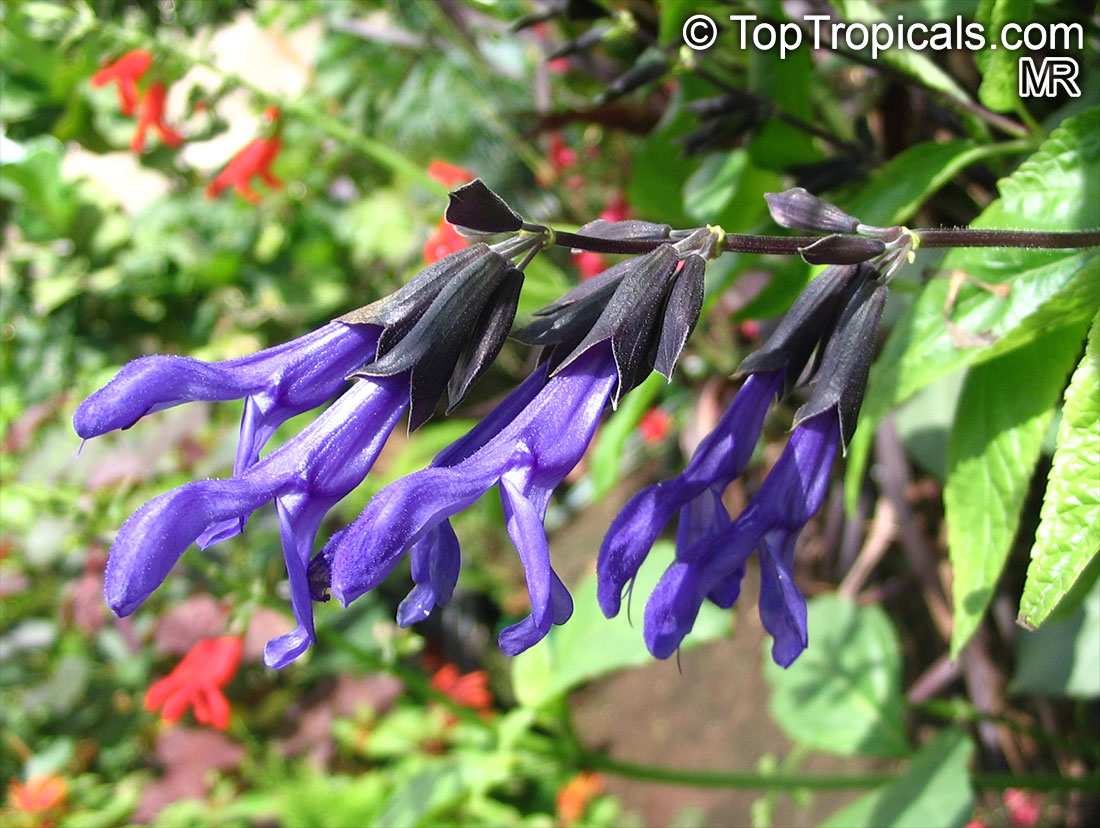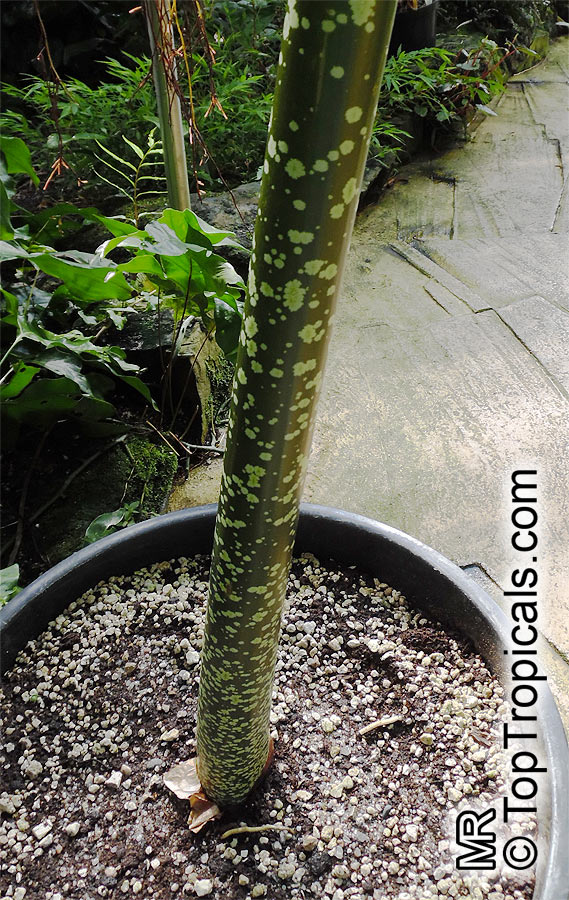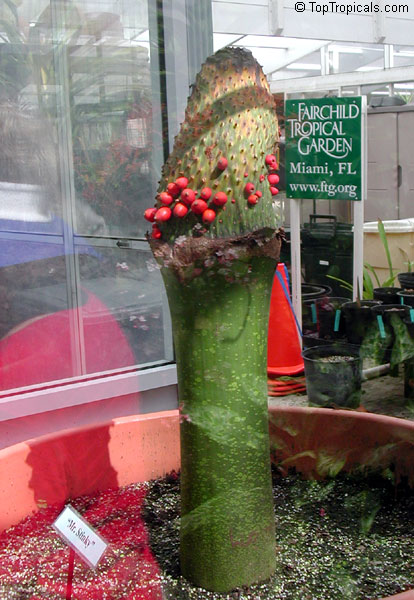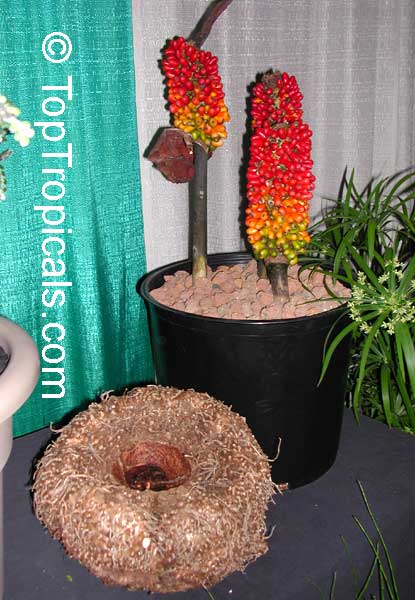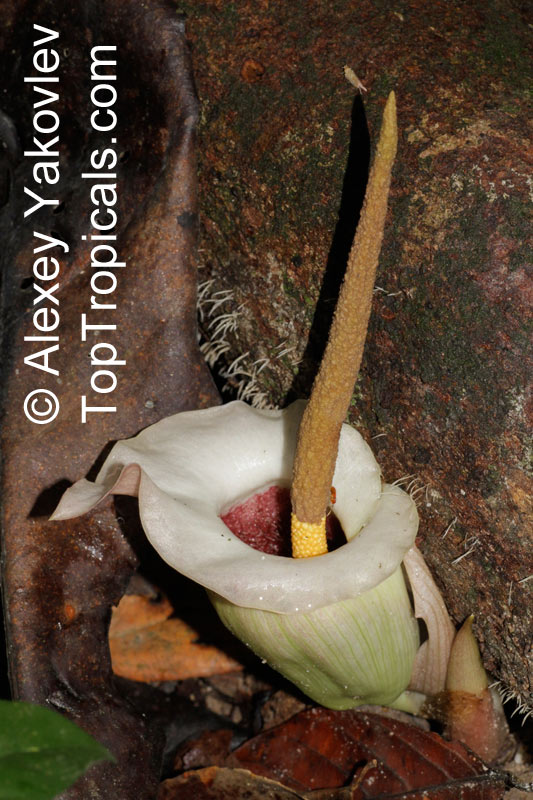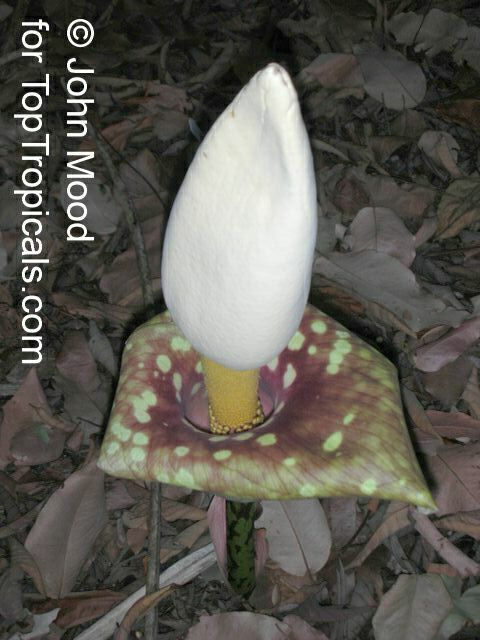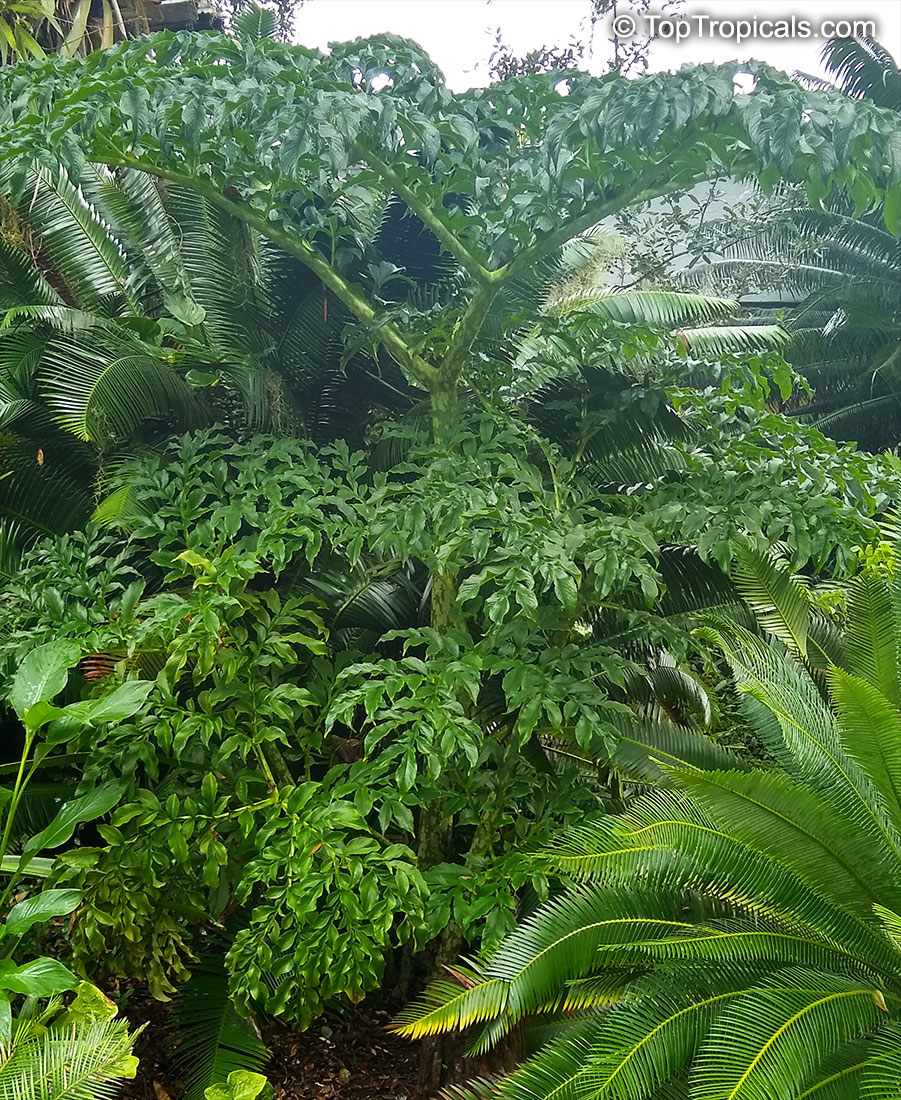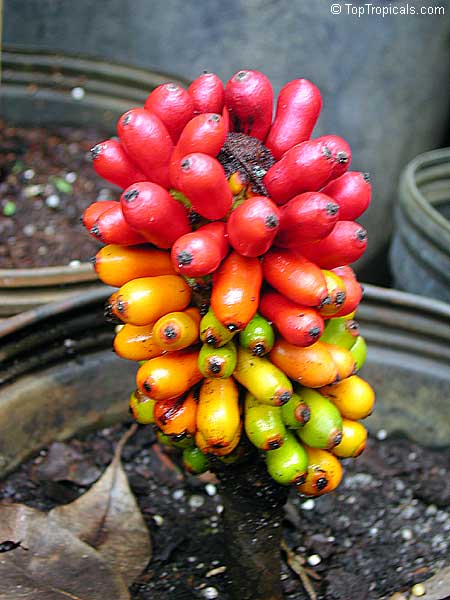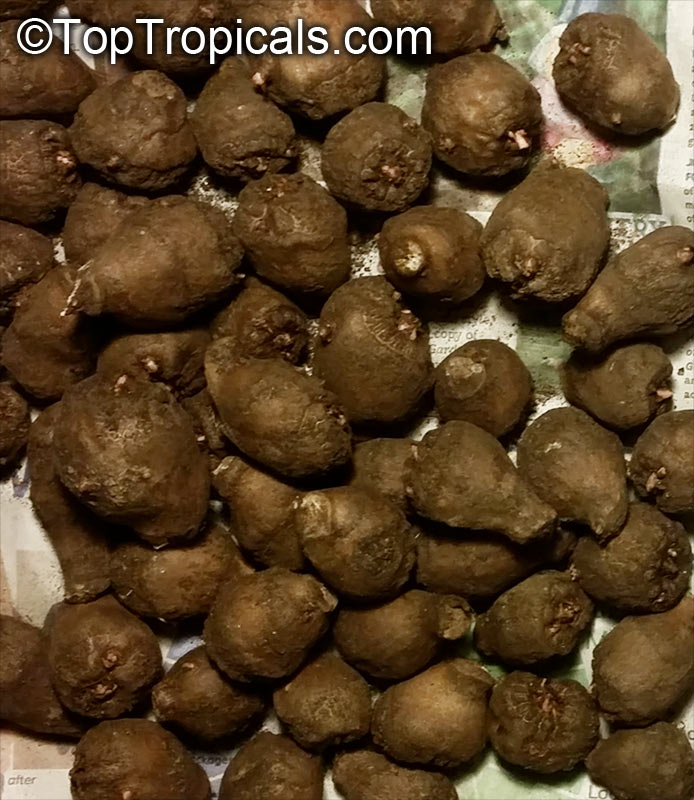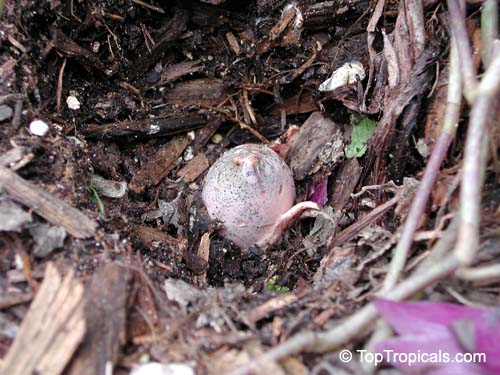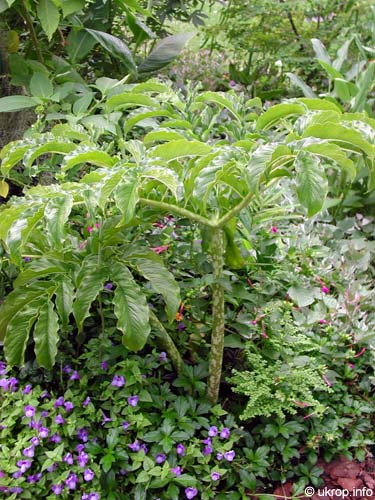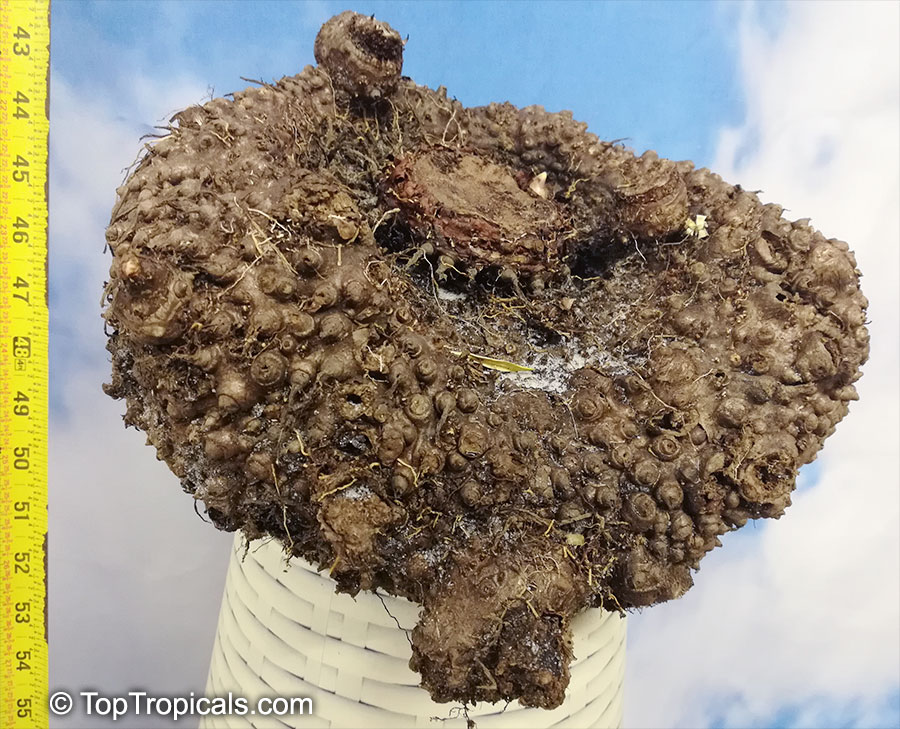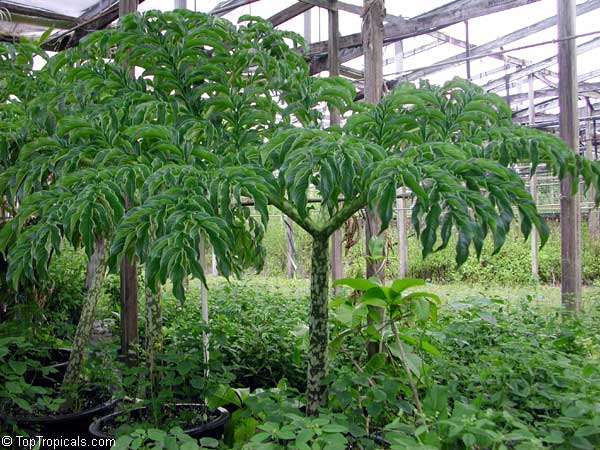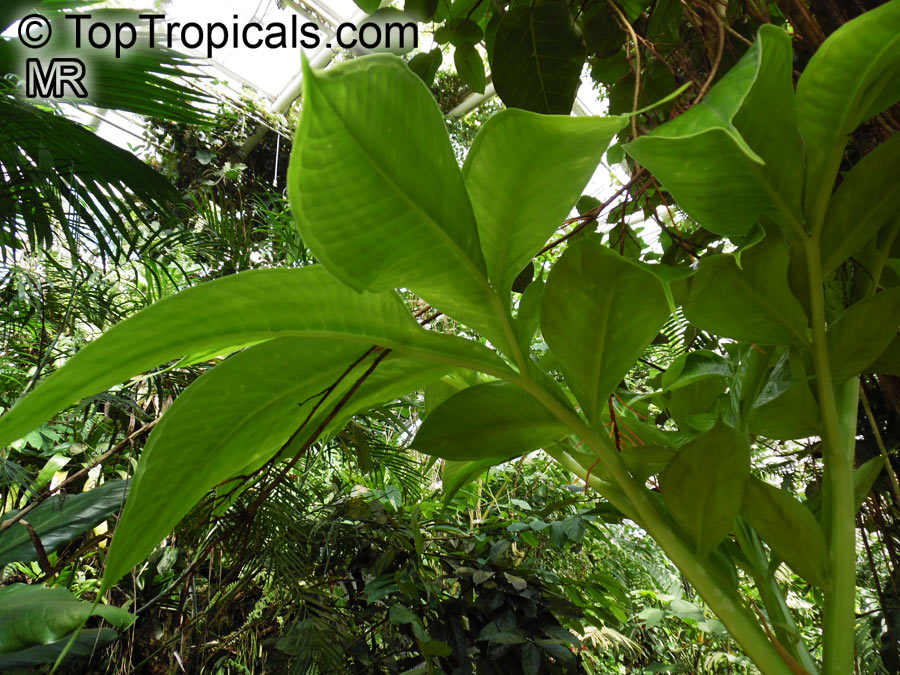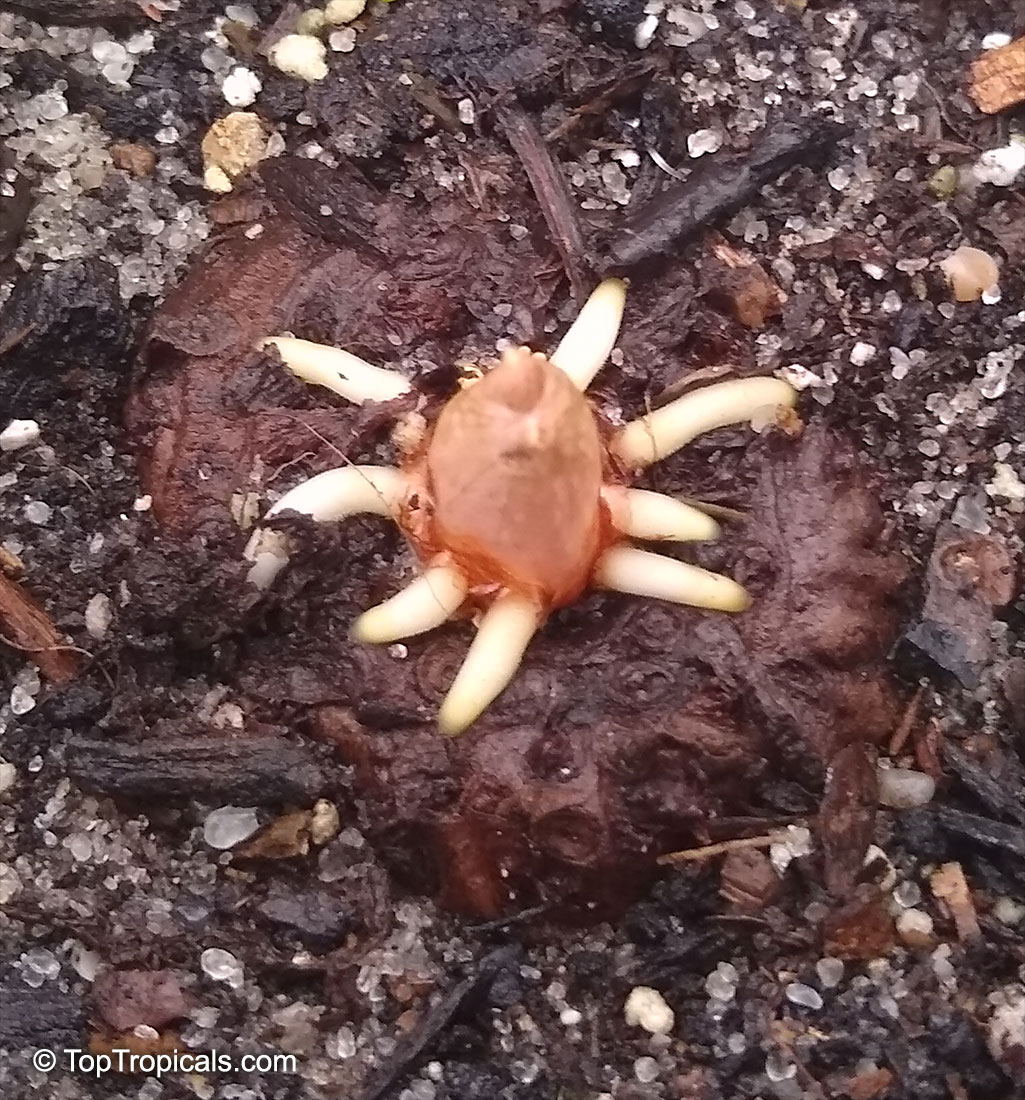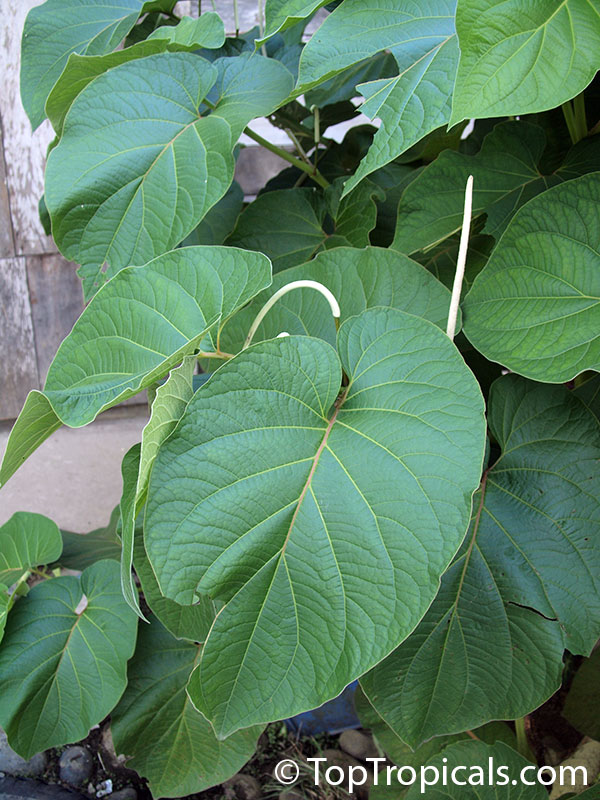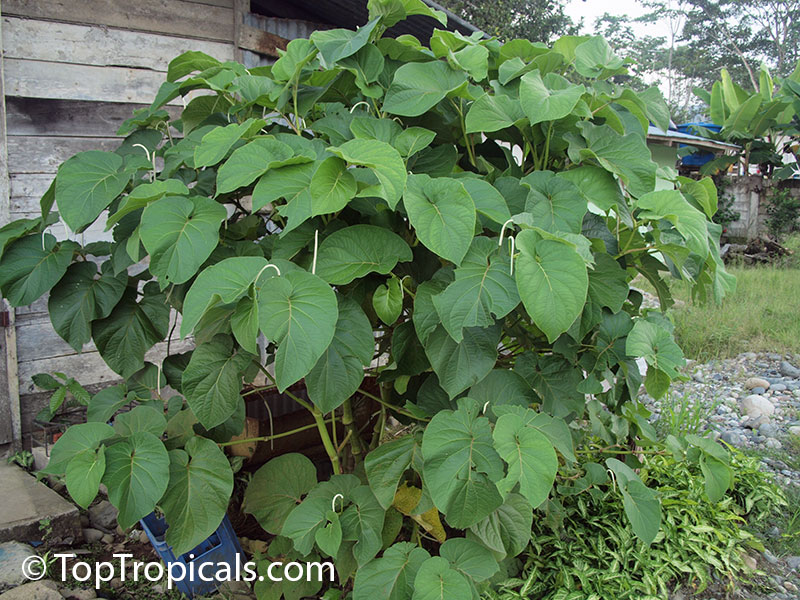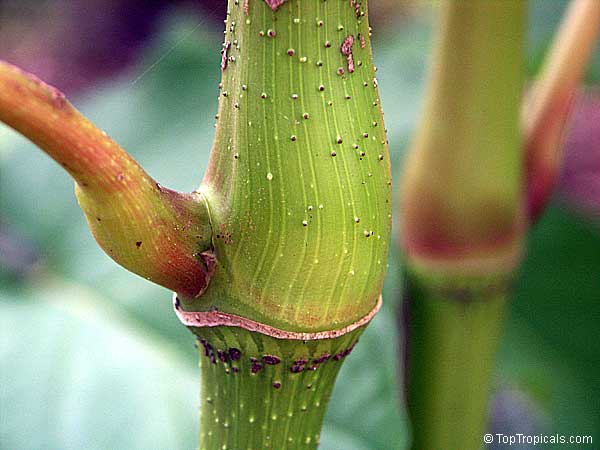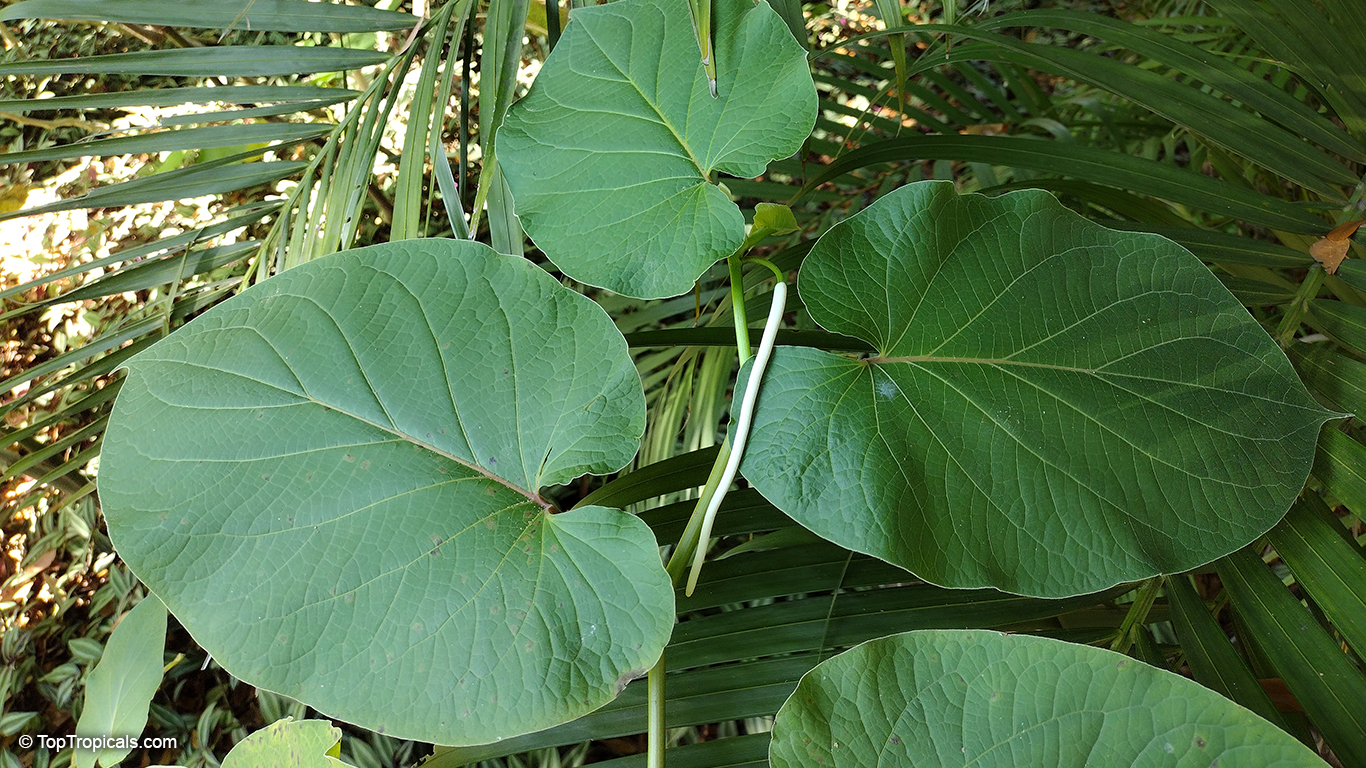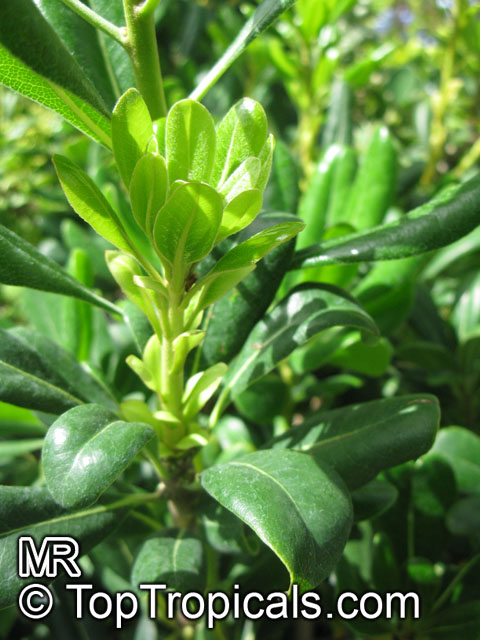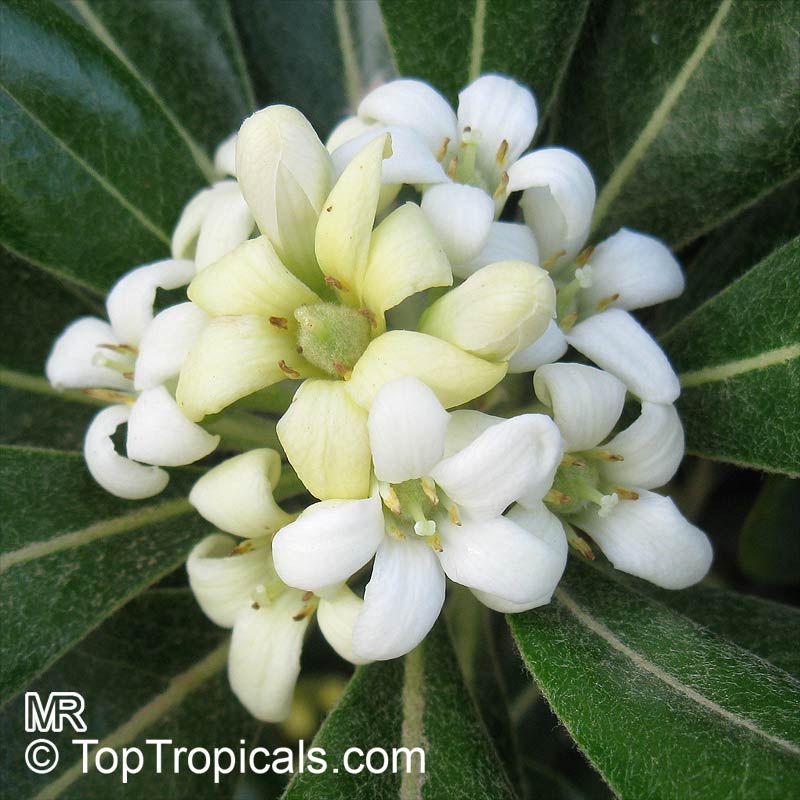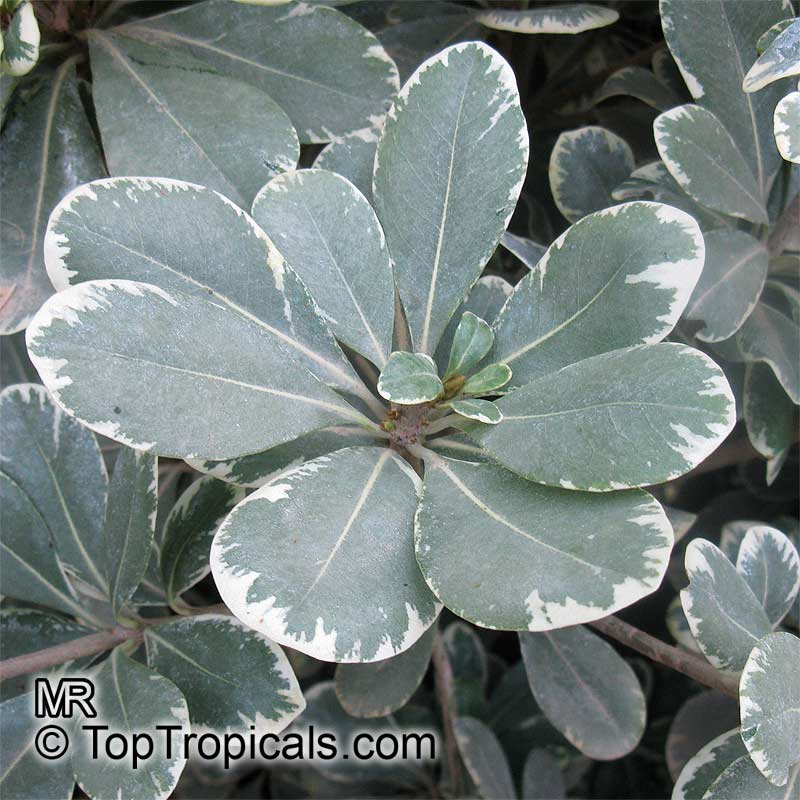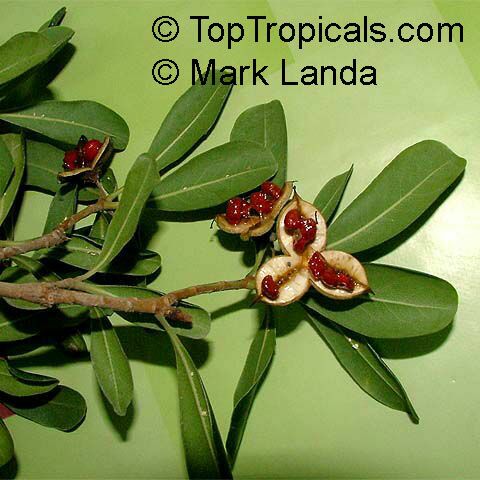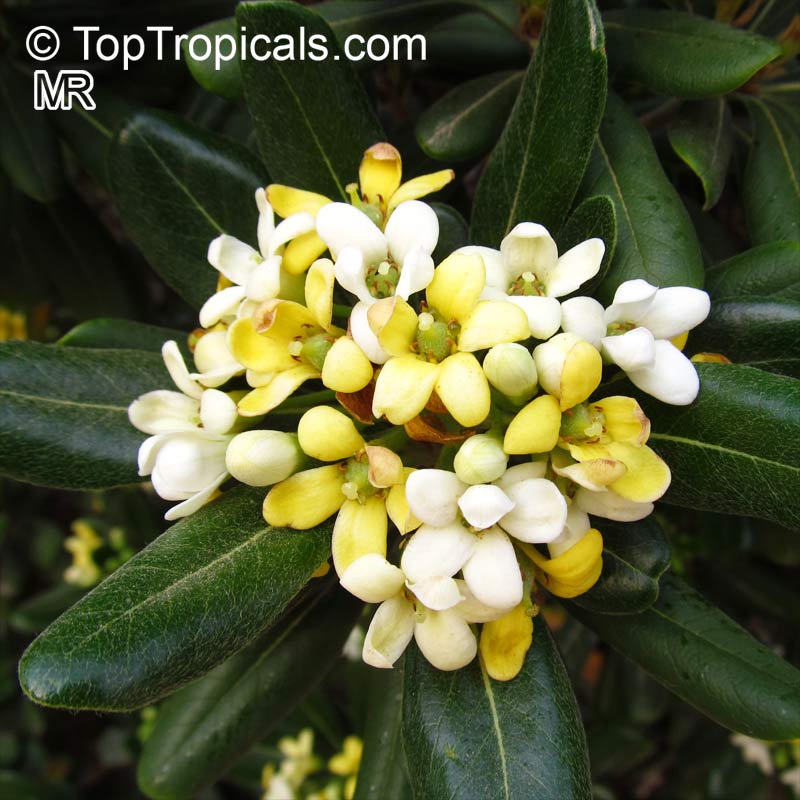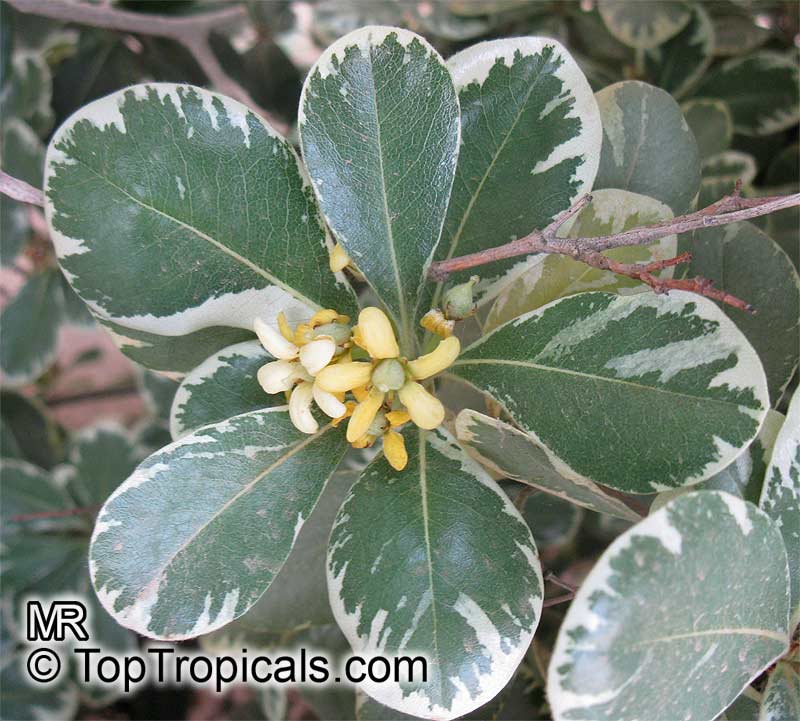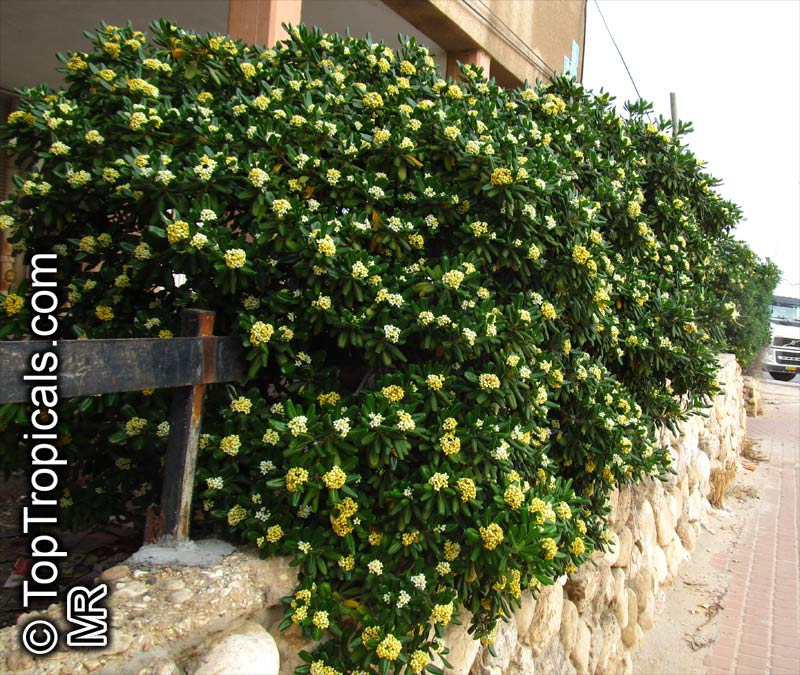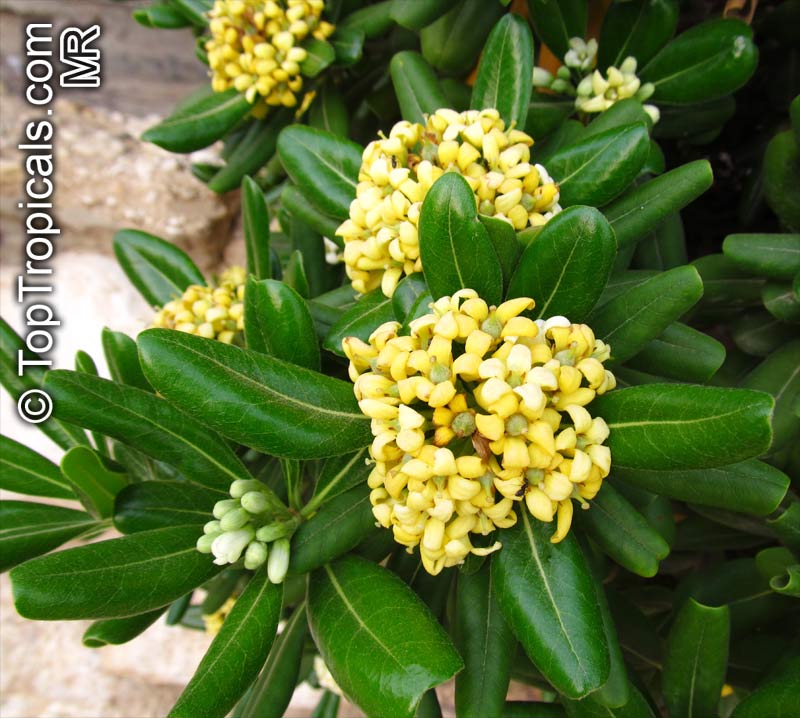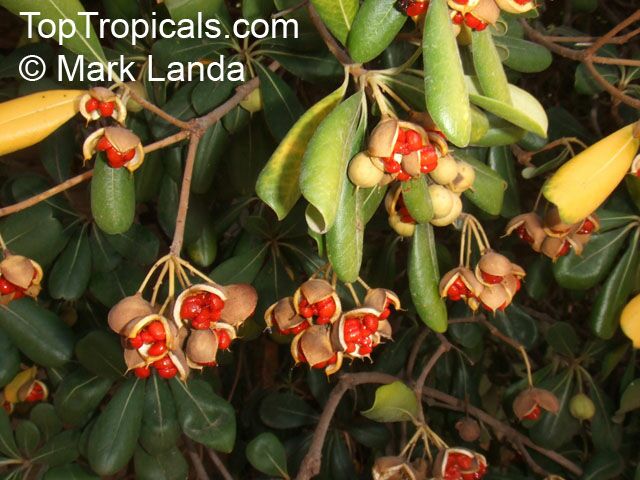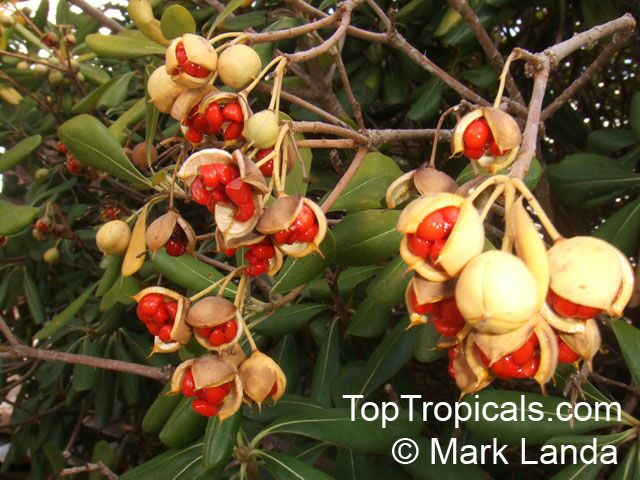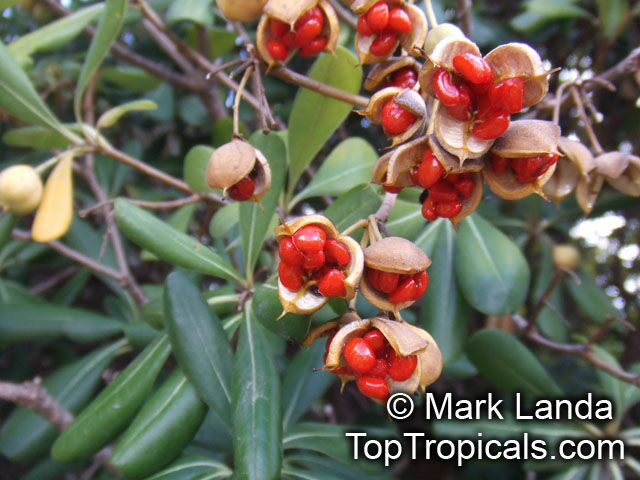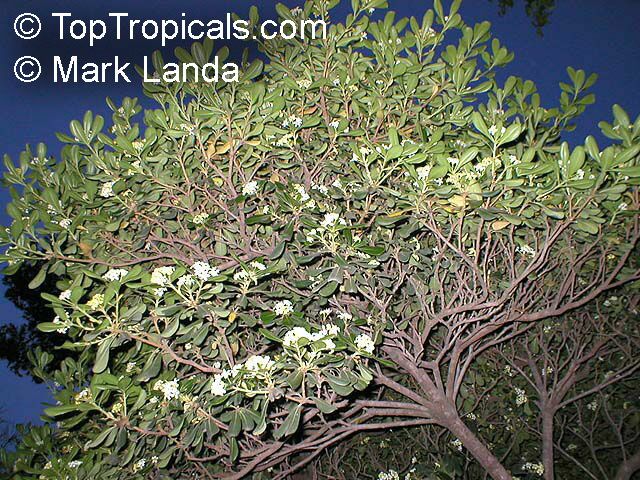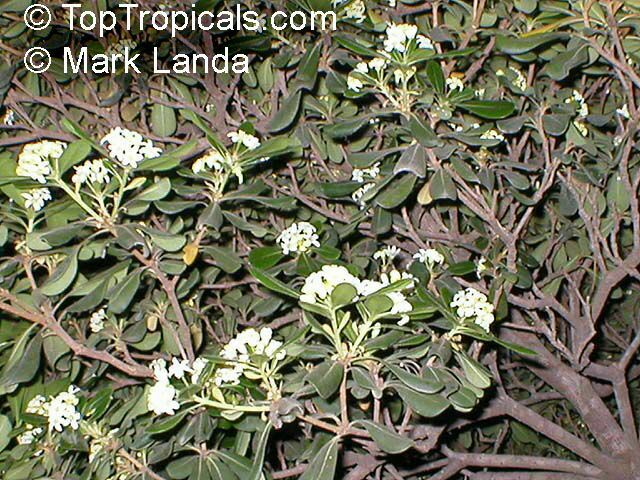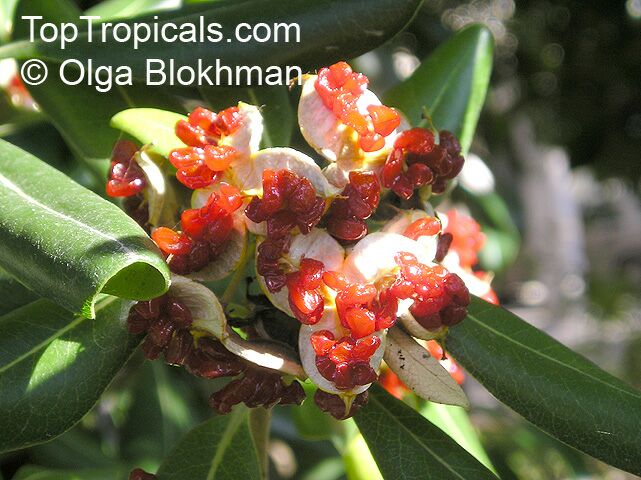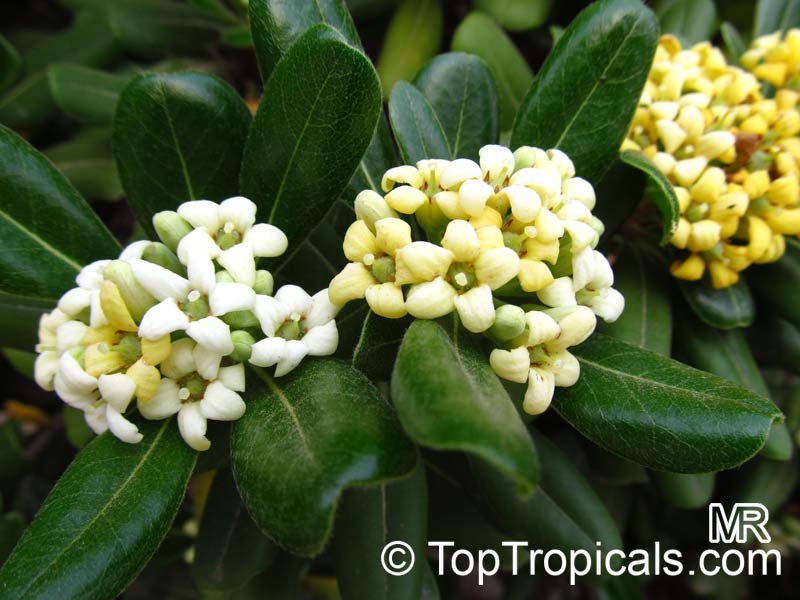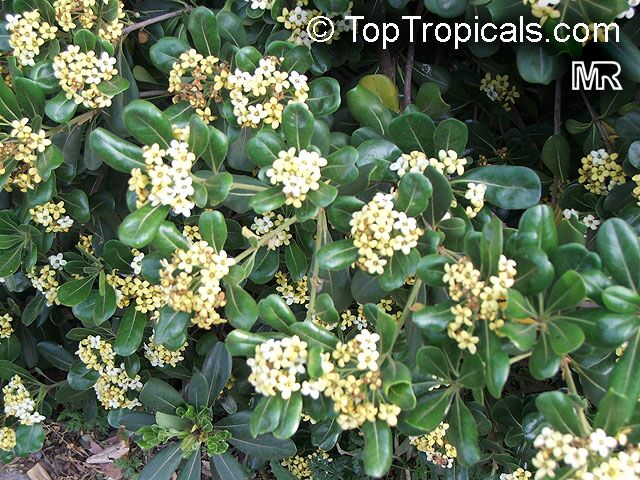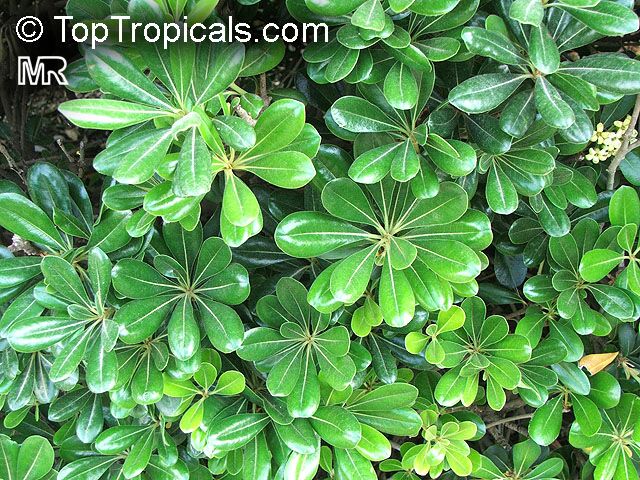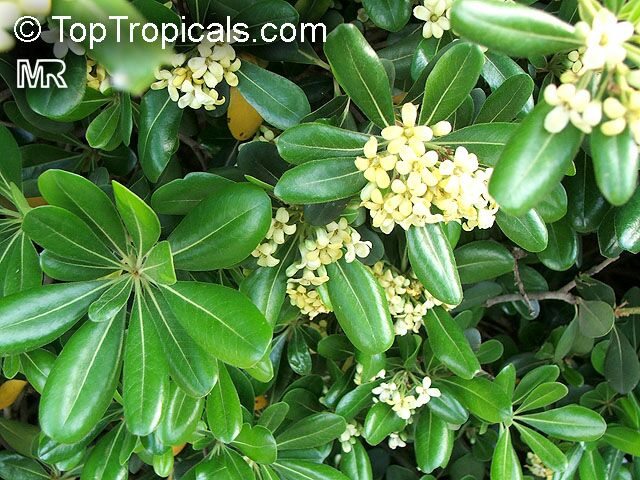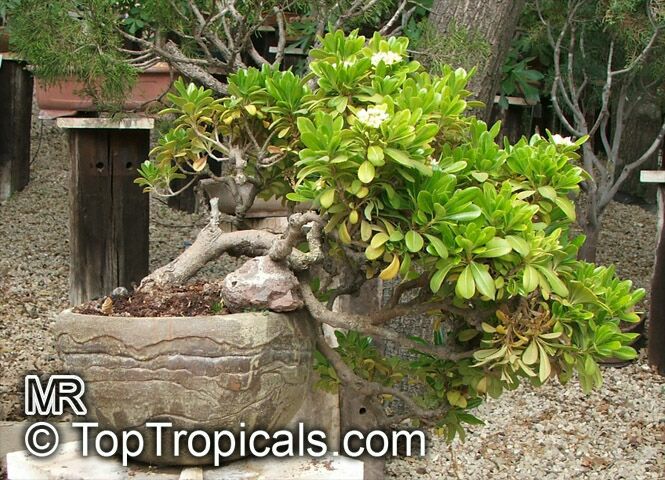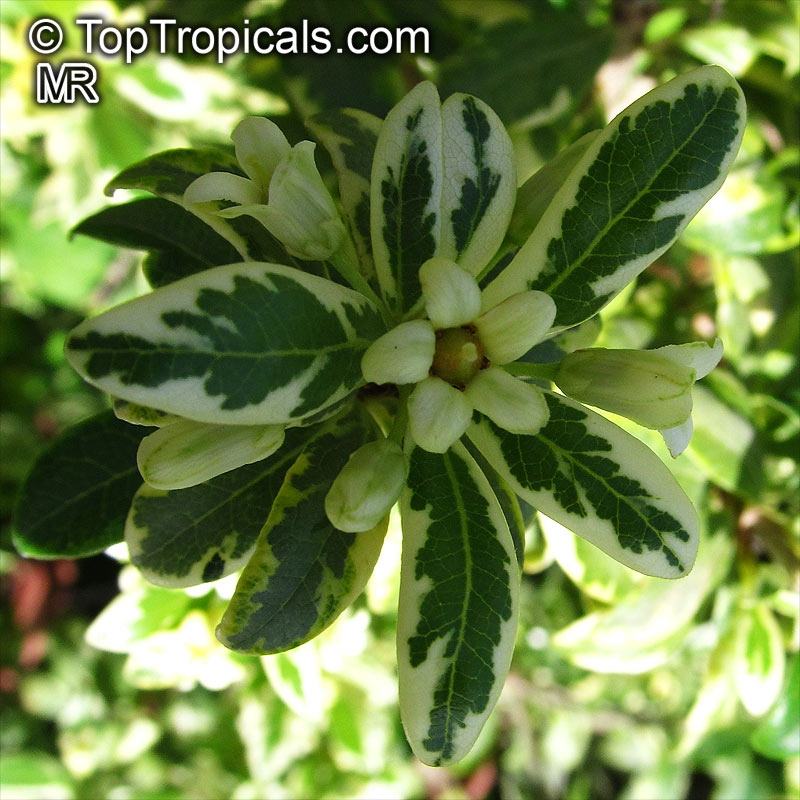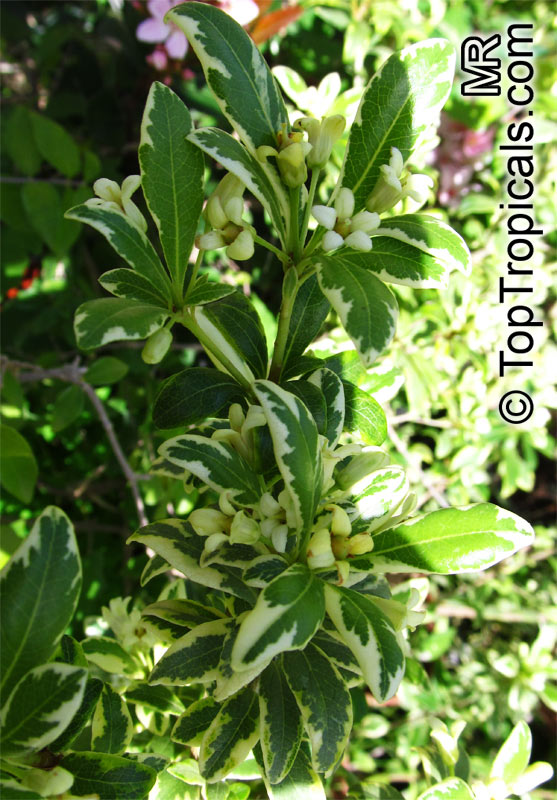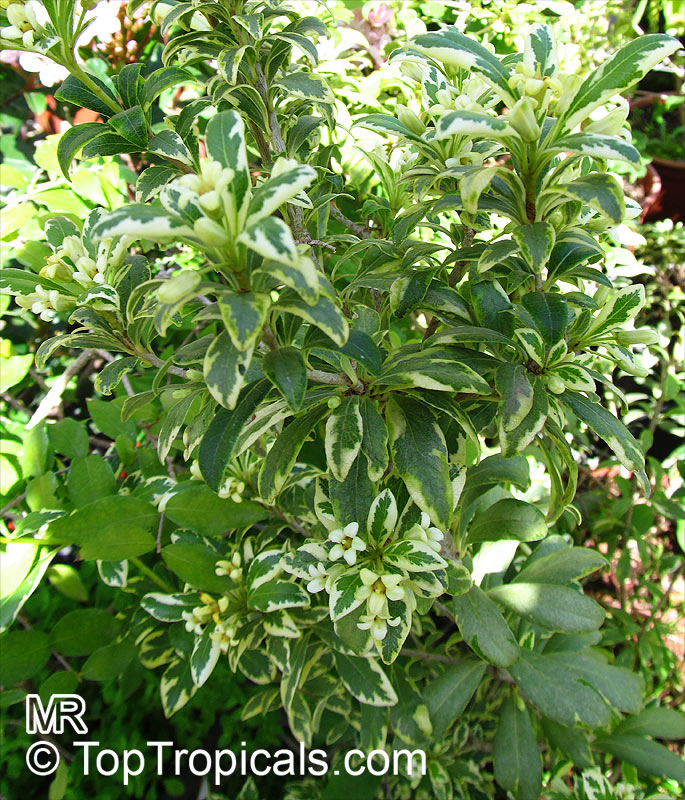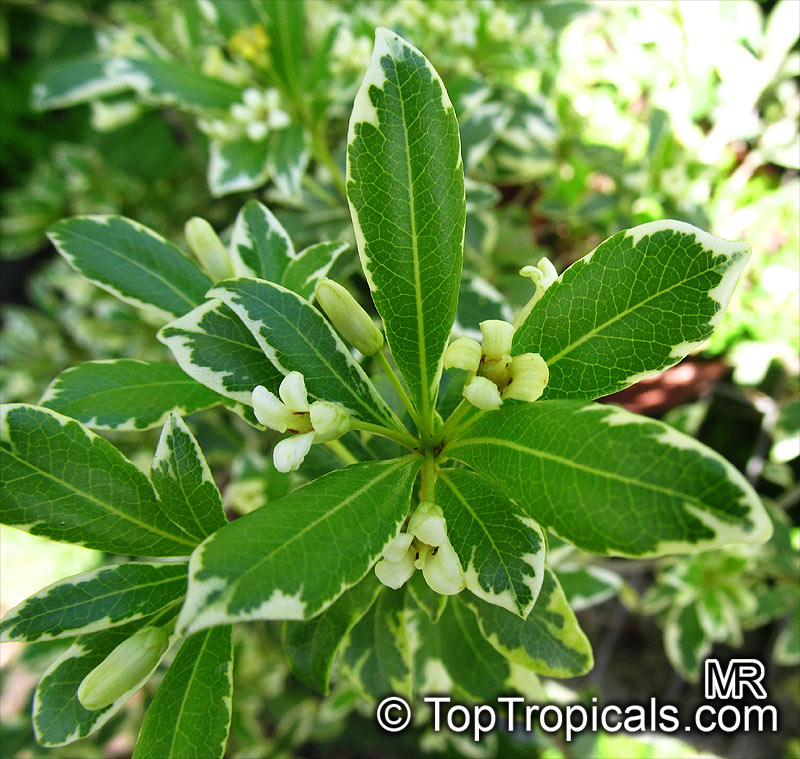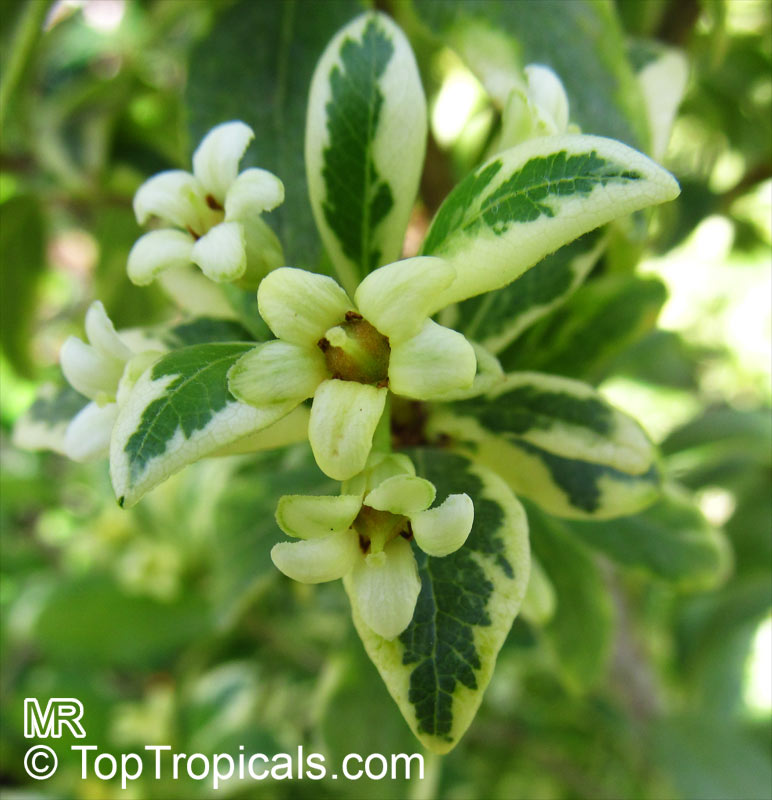Anise - Plant Encyclopedia Results
Top Tropicals Plant Encyclopedia
| Number of plants found: 6 |
Botanical name: Illicium sp.
Common names: False Anise, Anise Tree, Star Anise, Licorice
Family: Illiciaceae
Origin: East Asia












This interesting genus originates from the temperate to subtropical regions of East Asia and the Americas. It contains about 40 frost-hardy evergreen shrubs and small trees, grown for their handsome foliage and fragrant flowers. In older publications you may see the Illicium genus placed in the Magnoliaceae family. This is no longer correct as they are now placed in their own family Illiciaceae.
Star-anise (I. verum) from China and Vietnam is the source of a culinary spice and reportedly has medicinal uses. Illicium verum has a foliage and stems with a delightful anise odor that reminds of root beer with hints of licorice. The other species are toxic and are not a substitute for the culinary spice and flavorings obtained from Illicium verum, although they also have pleasant anise smell. Prefers partial shade or partial sun; soil should be moist.
See article about Illicium verum - Star Anise
Botanical name: Pimpinella anisum
Common names: Anise, Ani
Family: Apiaceae / Umbelliferae
Origin: Egypt, Greece, Crete and Asia Minor









Anise is known for its flavor, which resembles liquorice, fennel and tarragon. Western cuisines have long used anise as a moderately popular herb to flavor some dishes, drinks, and candies, and so the word has come to connote both the species of herb and the licorice-like flavor. The most powerful flavor component of the essential oil of anise is anethole. Anise has a reputation as a medicine in coughs and pectoral affections. In hard, dry coughs where expectoration is difficult, it is of much value.
Anise is a herbaceous annual plant growing to 3 ft. Anise plants grow best in light, fertile, well drained soil. The seeds should be planted as soon as the ground warms up in spring. Because the plants have a taproot, they do not transplant well after being established, so they should be started either in their final location or transplanted while the seedlings are still small.
Botanical name: Salvia guaranitica
Common names: Anise-scented Sage, Hummingbird Sage
Family: Lamiaceae
Origin: South America









The small shrubs reach heights between 2-5 feet.
Salvia guaranitica is a small shrub native to South America, with fragrant ovate leaves with a fresh mint green color, and an anise scent when crushed. The flowers are a unique mix of blue, lavender, and purple shades, attracting butterflies and hummingbirds.
This small shrub should be planted in full sun or semi-shade locations and watered regularly. Salvia guaranitica can handle moderate water but will benefit from regular irrigation. Mature plants have proven cold hardy at least to mid 20s F for a short time and should be grown in USDA Zone 8-10.
When planting Salvia guaranitica in cold regions, pot it and select the warmest location you can find for it. Move it in when the temperature drops below freezing and move it back out when temperatures rise to the minimum hardiness rank. When bringing it in, make sure to keep it well-watered, as it's harder for the plants to get water when they are indoors in containers. During the colder months, ensure that it gets plenty of light and never let it sit in a waterlogged environment.
Botanical name: Amorphophallus sp.
Common names: Voodoo lily, Devils tongue, Snake Palm, Corpse flower, Elephant Foot Yam
Family: Araceae
Origin: Himalaya, India, Burma










Amorphophallus species are herbs with an underground storage organ. This is usually a tuber. One single leaf emerges from the tuber, consisting of a vertical petiole (stalk) and a horizontal leaf-blade. The latter is dissected into few or numerous small leaflets. Once plants are mature an inflorescence may develop. The inflorescence may replace the leaf in one season, or develop alongside it. From winter dormant tubers emerge an umbrella like plant with beautiful speckled stems. Large flowers will emerge from mature plants in the spring. When the spathe opens the female flowers are receptive and must be pollinated that same day. The opening inflorescence emits an attractant scent. In Amorphophallus this scent has diversified considerably. In most species the scent is anything but pleasant, and reminds one of varieties of death, decay, sewage, gas and the like. A few species develop a scent that is actually pleasant to the human nose (e.g. carrot-like, anise, chocolate, fruity, lemon). After successful pollination most parts of the spathe wither and drop off, after which the individual female flowers develop into berries, containing the seeds. These berries are usually red or orange-red, but occasionally blue, white, or yellow-and- white. Amorphophallus thrives in a rich loamy soil in partial shade. Compost should consist of 2 parts loam to 1 part peat moss to 1 part sand. Keep the plant evenly moist all through the growing season. Keep dry during dormancy, keep moist during growing period. Fertilize monthly with a houseplant fertilizer. Water should be gradually withheld starting in October until the leaf withers. Store corms at a temperature above 50 degrees. They can be brought into active growth in late March. If the corms are strong enough, a blossom will soon be produced. The leaf follows soon afterwards. A. bulbifer definitely dislikes low humidity - the leaflets may partially desiccate; this seems to be more pronounced in low light. Also, in low light, the leafes become exceptionally dark green, with nicely contrasting pink margins. Such plants have to be moved to brighter light very gradually. In bright light, the leaves are bright green, with pinkish margins less pronounced. Other species: konjac, titanum, and much more...
Amorphophallus konjac is one of the largest flowers, a perennial exotic Asian plant. It grows a single, elongated center called a corm and a single large leaf that wraps around it. The corm is the part of the plant that is used, as well as its tuber, which is commonly called the konnyaku potato. Amorphophallus konjac acts as a diet aid that has many benefits. Its ability to swell when mixed with water allows it to fill the stomach. It also moves through the digestive system very slowly, making the appetite feel satisfied for a longer period of time. This characteristic of Amorphophallus konjac is beneficial in treating obesity. It is one of the most exotic, bizarre flowers. Can be easily grown in a pot as a house plant. The single leaf dormant in winter, then in spring the plant shoots out a remarkable flower.
Botanical name: Piper auritum
Common names: Root Beer Plant, Mexican Pepperleaf, Hoja Santa , Veracruz Pepper, False Kava-Kava, Sacred Pepper
Family: Piperaceae
Origin: Mexico through Colombia












Close relative of Piper methysticum (Kava-Kava), and Piper nigrum (Black Pepper), this herb originated from Tropical America and grows also in the South Pacific. Large-leaved perennial, known for its leaves, which are used for their spicy aromatic scent and flavor, some liken to root beer, others to anise-clove. This species is easily identified by its huge leaves which can grow over a foot long in older specimens. Plants will grow out from roots so it can spread in ideal conditions. Flowers are long, skinny, white, and fuzzy looking. They may be borne in season. The plant doesn't usually form many fruits outside of its native range. The leaves are chopped and used for flavoring, as well as used whole, as wrappings for meats, tamales, etc.
P. auritum is very often confused with Piper methysticum (Kava-Kava), and probably has some similar effects. According to other sources, it can be poisonous. Explorer Captain James Cook, who gave this plant the botanical name of "intoxicating pepper", first discovered the true kava kava. Kava has been used for over 3,000 years for its medicinal effects as a sedative, muscle relaxant, diuretic, and as a remedy for nervousness and insomnia. It has been used in parts of the Pacific at traditional social gatherings as a relaxant and in cultural and religious ceremonies to achieve a higher level of consciousness. The roots can be made into a mildly narcotic beverage that is comparable to popular cocktails in our culture. Kava is now recognized by many doctors as an alternative to drugs like Xanax and Valium.
See Article about this plant.
Recommended Fertilizer: SUNSHINE Robusta - Rapid Growth Booster
Botanical name: Pittosporum tobira
Common names: Japanese Mockorange, Japanese Pittosporum, Tobira
Family: Pittosporaceae
Origin: China, Formosa, Japan









In general the Japanese pittosporum grows taller in the shade while those grown in full sun are more compact. The leathery leaves are glossy on the top with undersides that are lighter and have a dull surface. These very ornamental leaves reach a length of from 1-5 in and up to 1 in wide with edges that recurve (curl down and inward).The small flowers are about 0.5" in diameter and are held in clusters at the branch tips. They are pure white when they emerge from the bud and slowly age to a mellow creamy yellow. This plant is very adaptable and will grow in most soils except for those that are constantly wet. Moderate moisture is required for fastest growth and best looks. Established plants are able to survive long periods of drought but will look the worse for wear - will recover when adequate moisture is obtained. Propagation: By cuttings and seeds.
Use link to repeat this search:
https://toptropicals.com/cgi-bin/garden_catalog/cat.cgi?find=Anise&search_op=and&keyword_op=and&language=e&number=10
&no_change_lang=1&user=tt&sale=1&first=0
